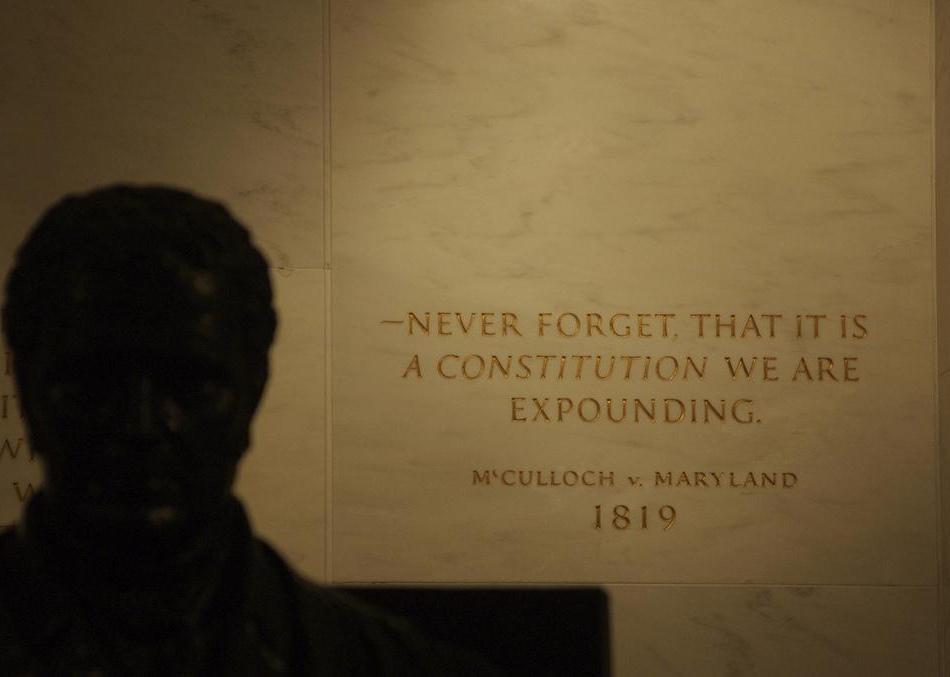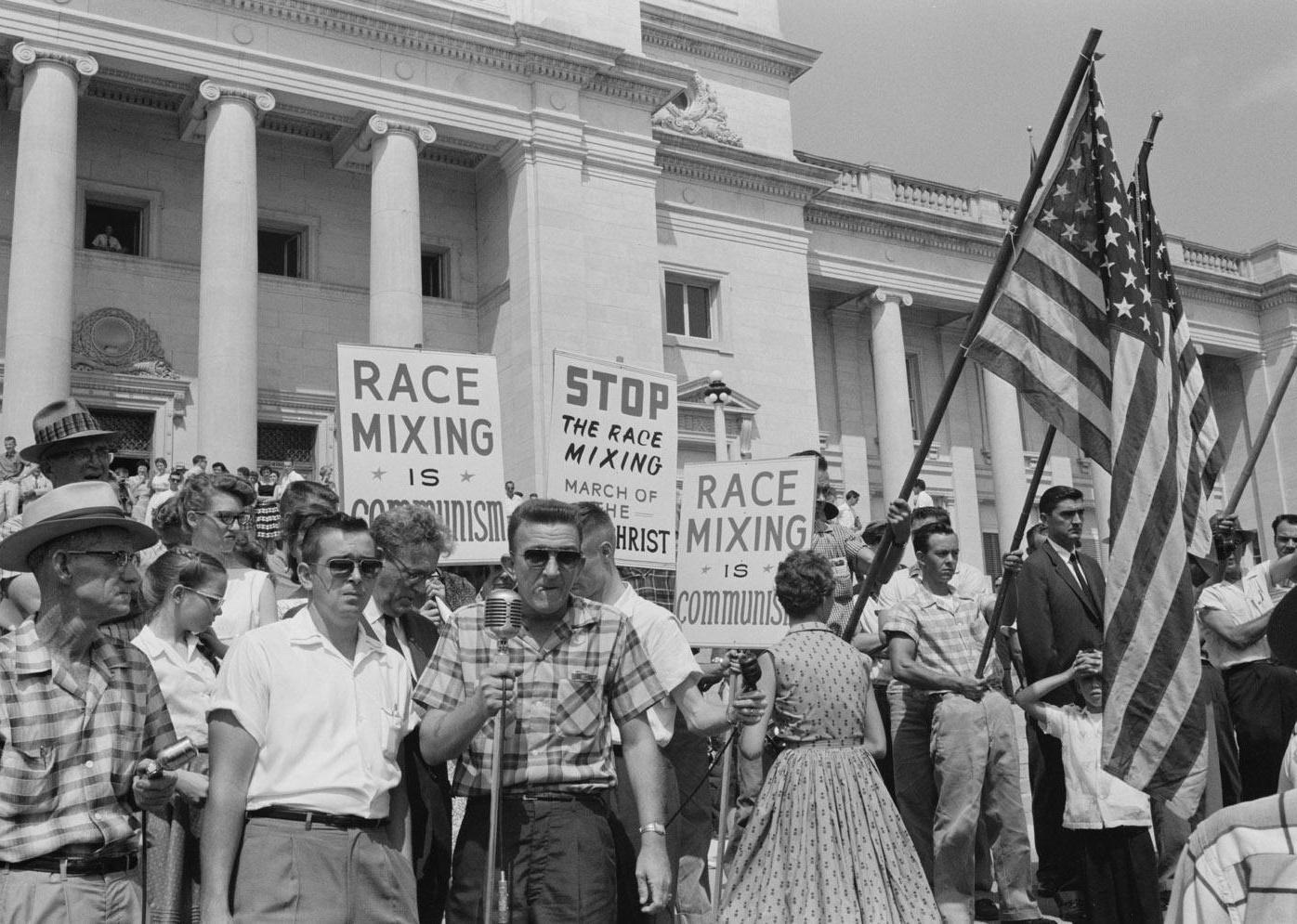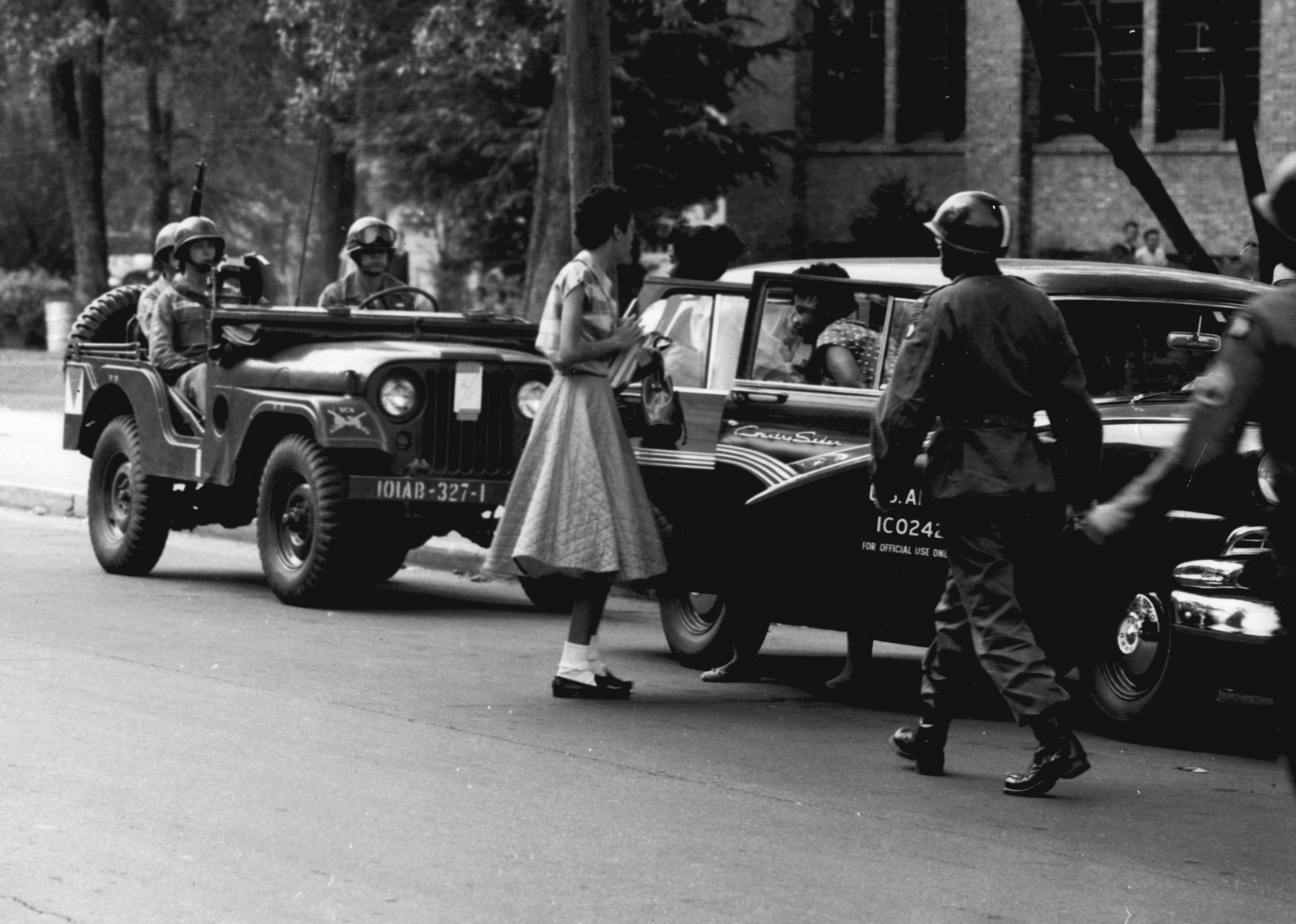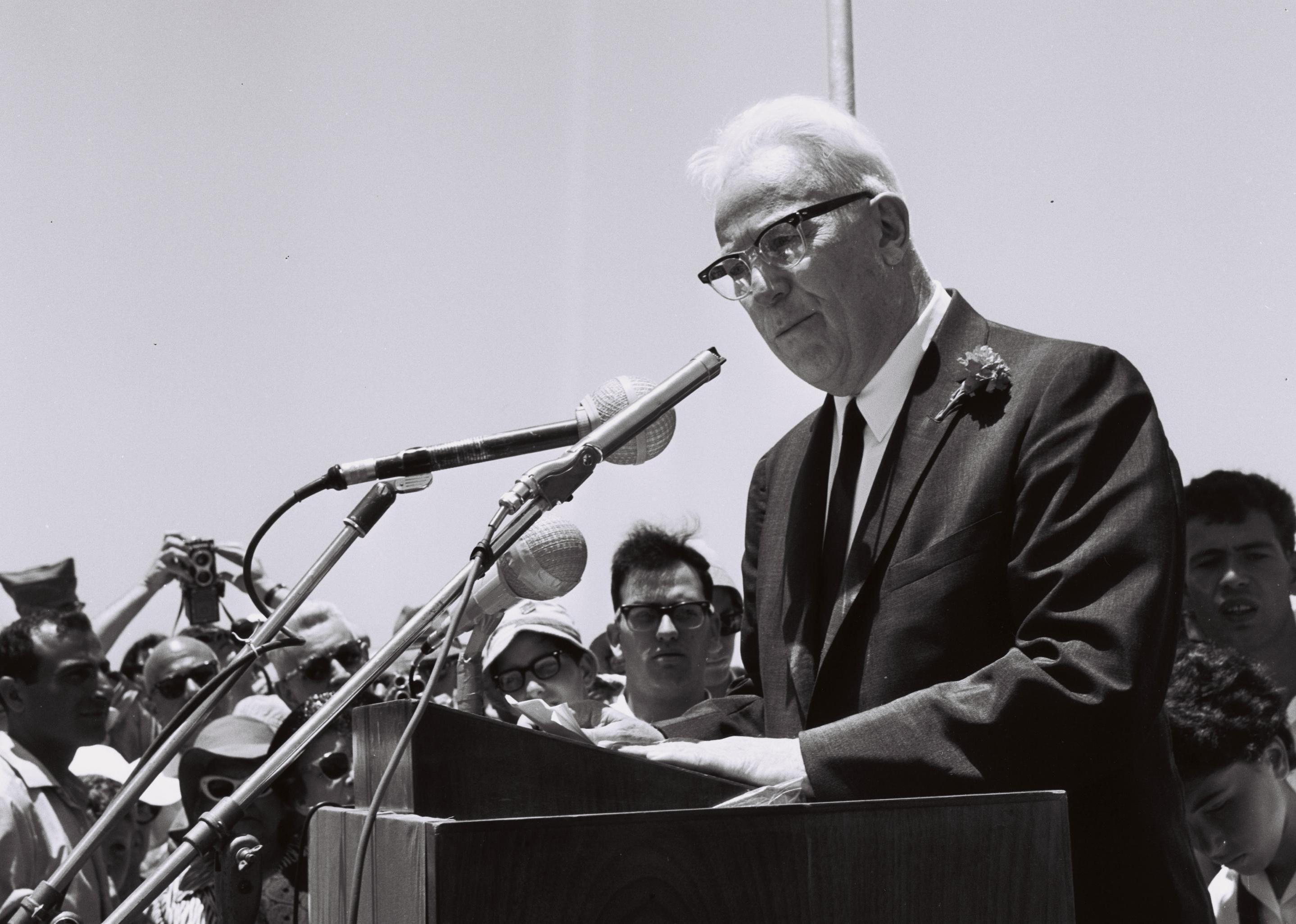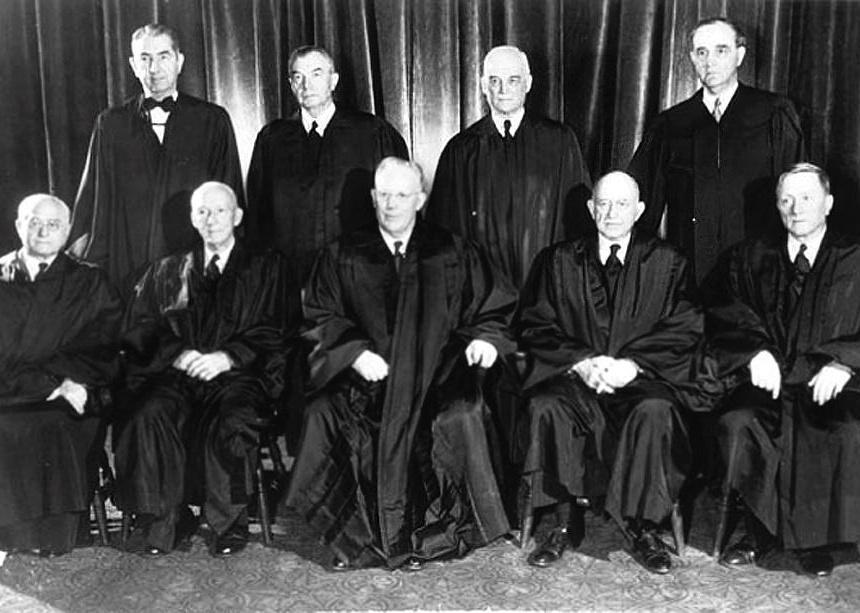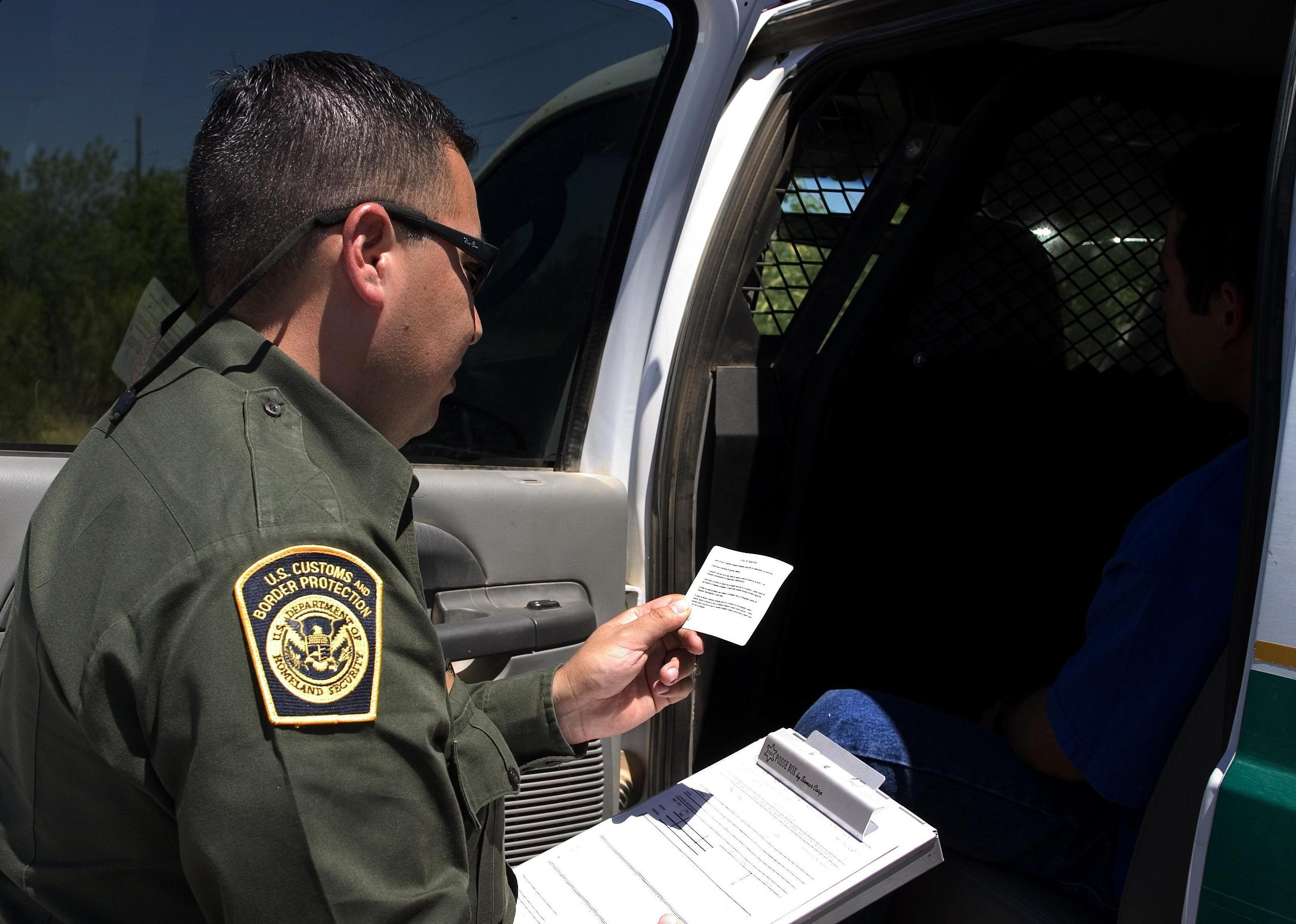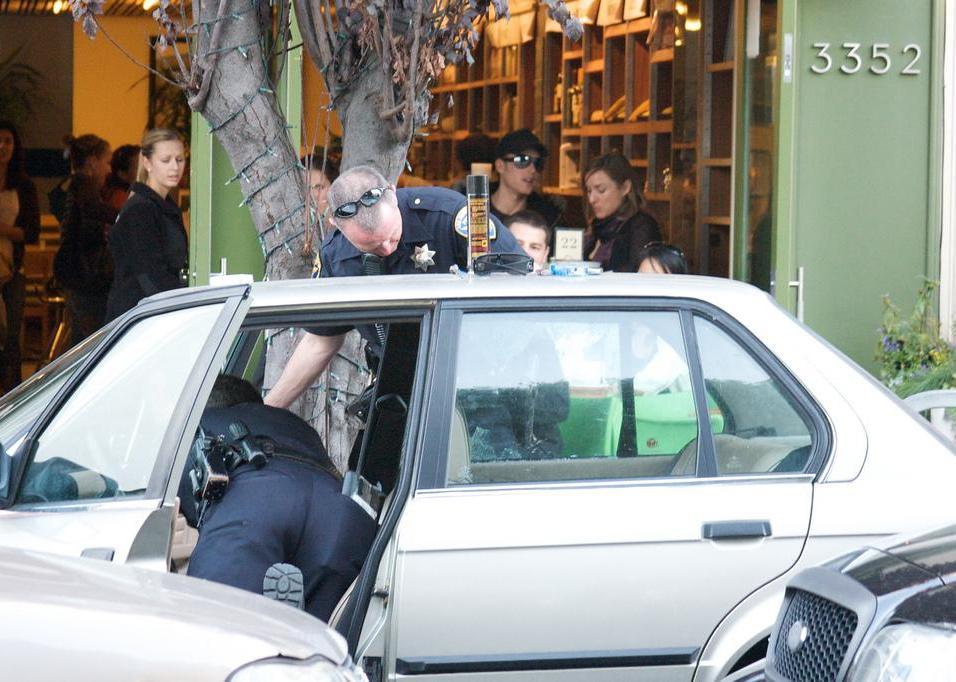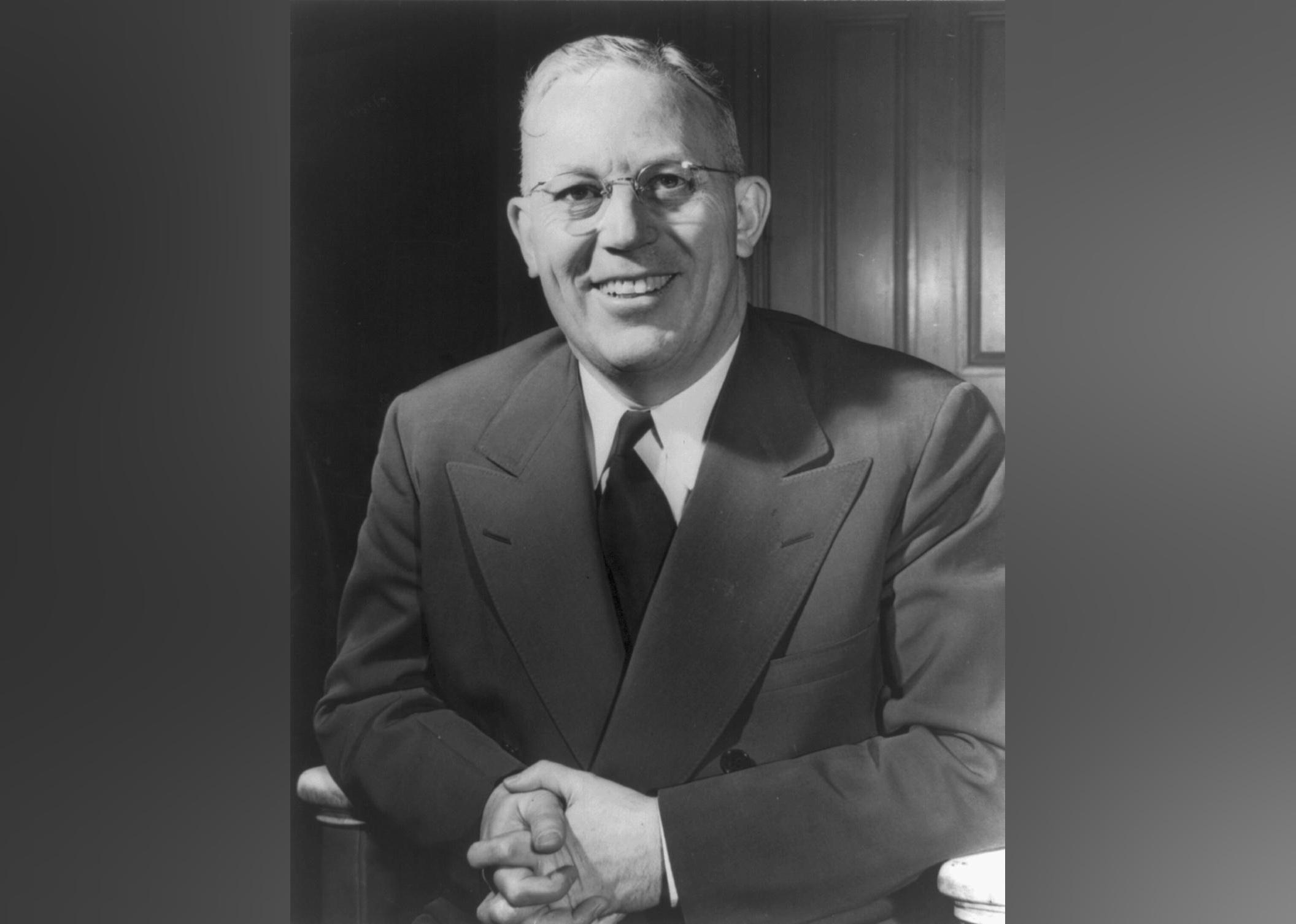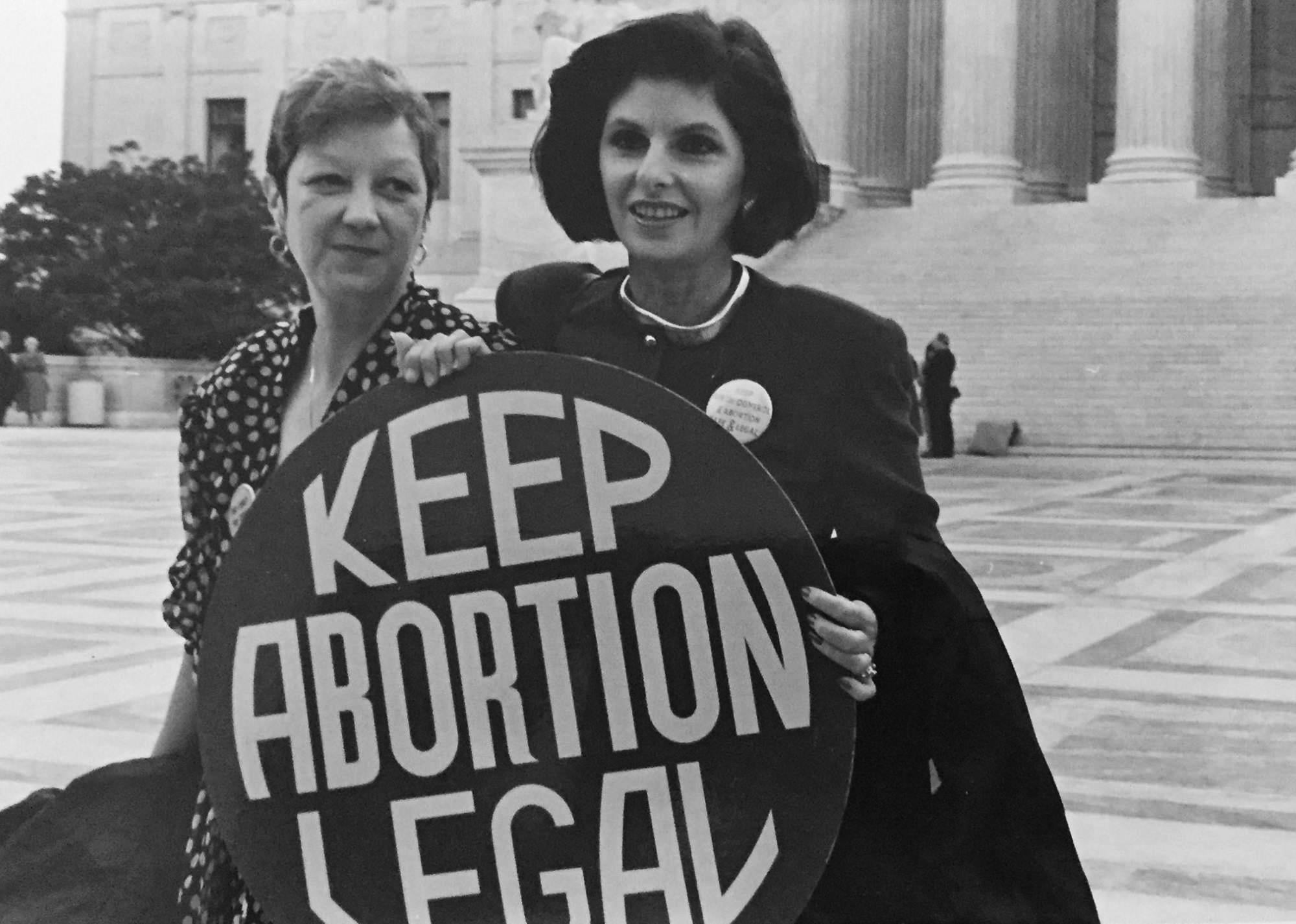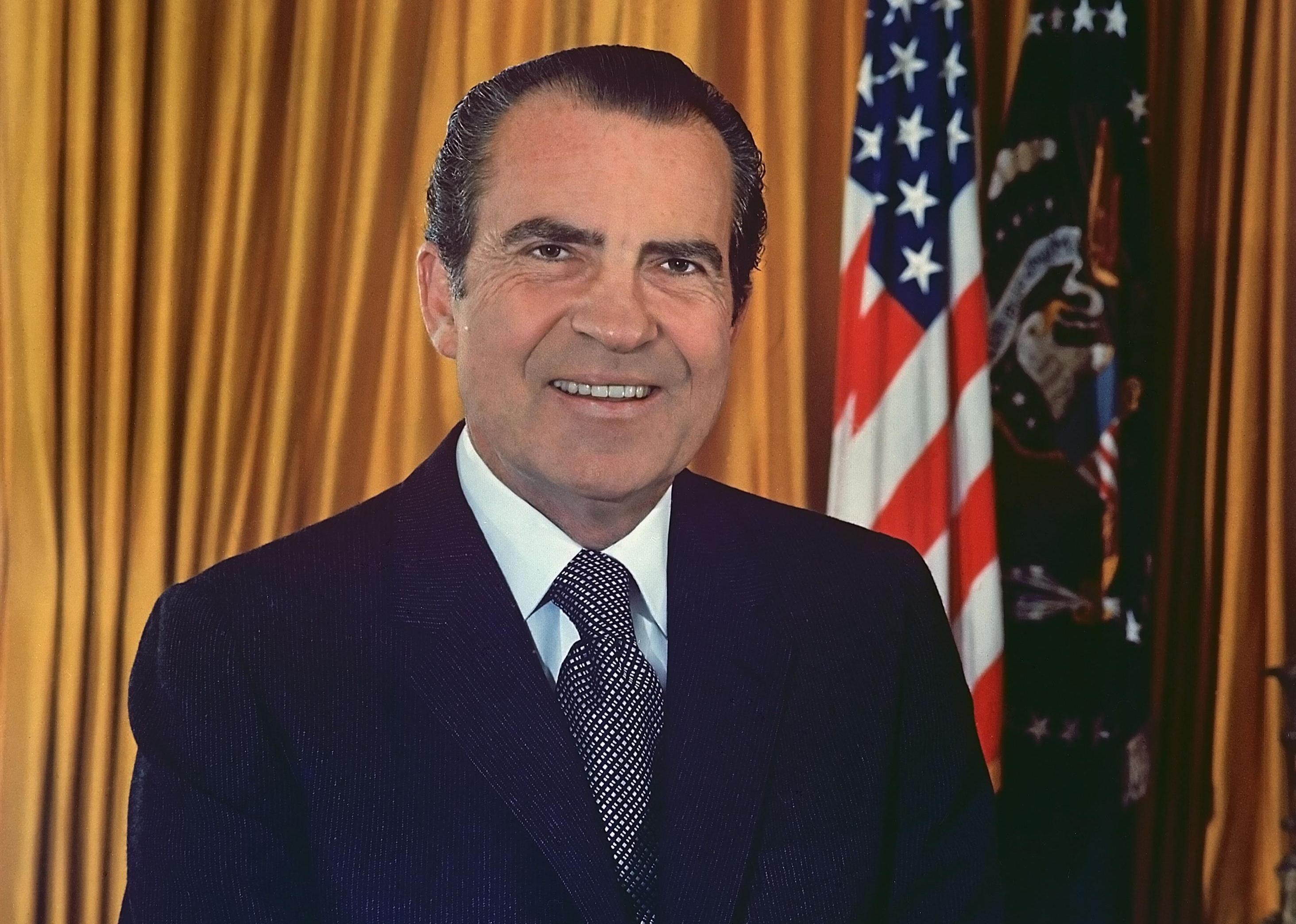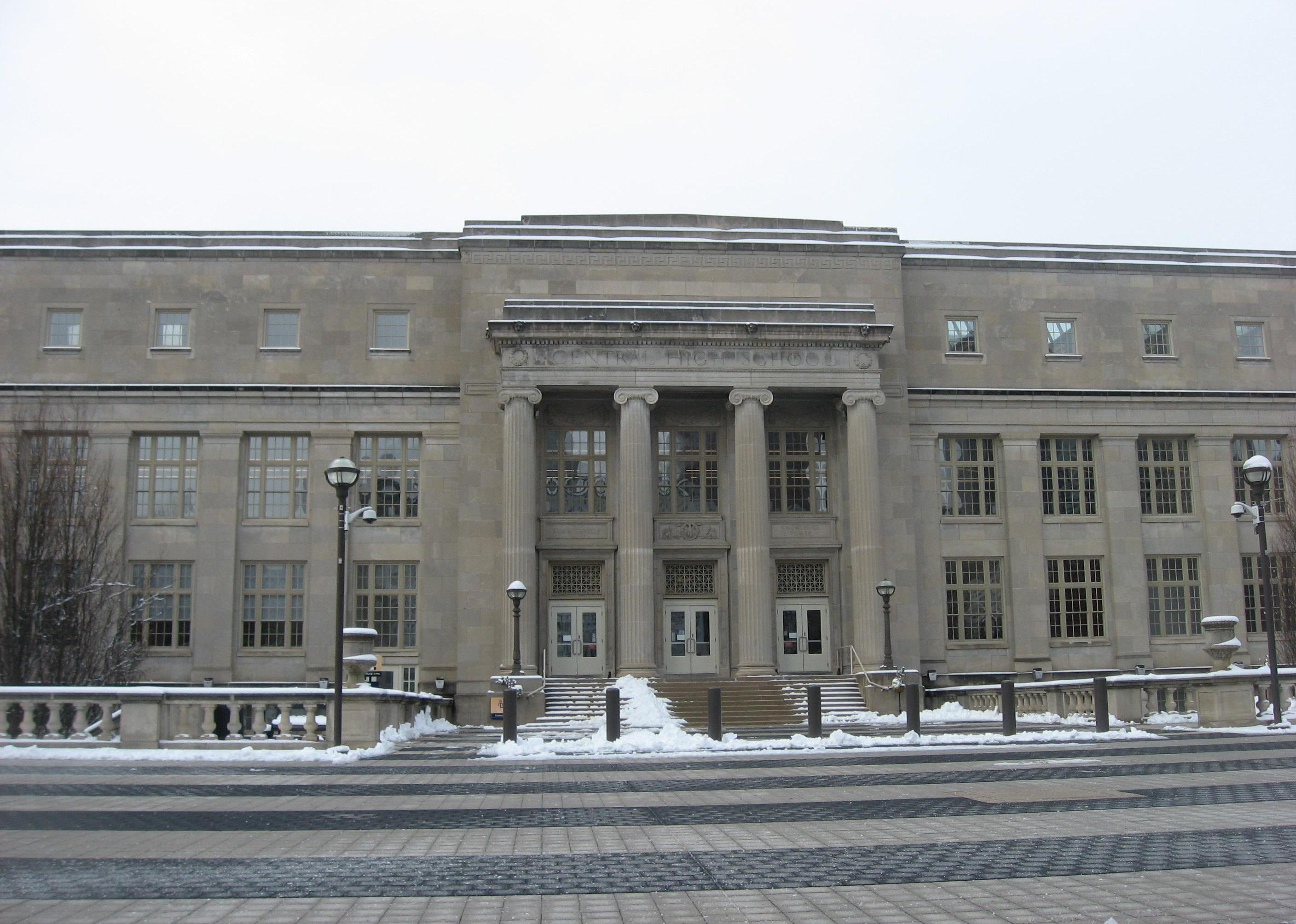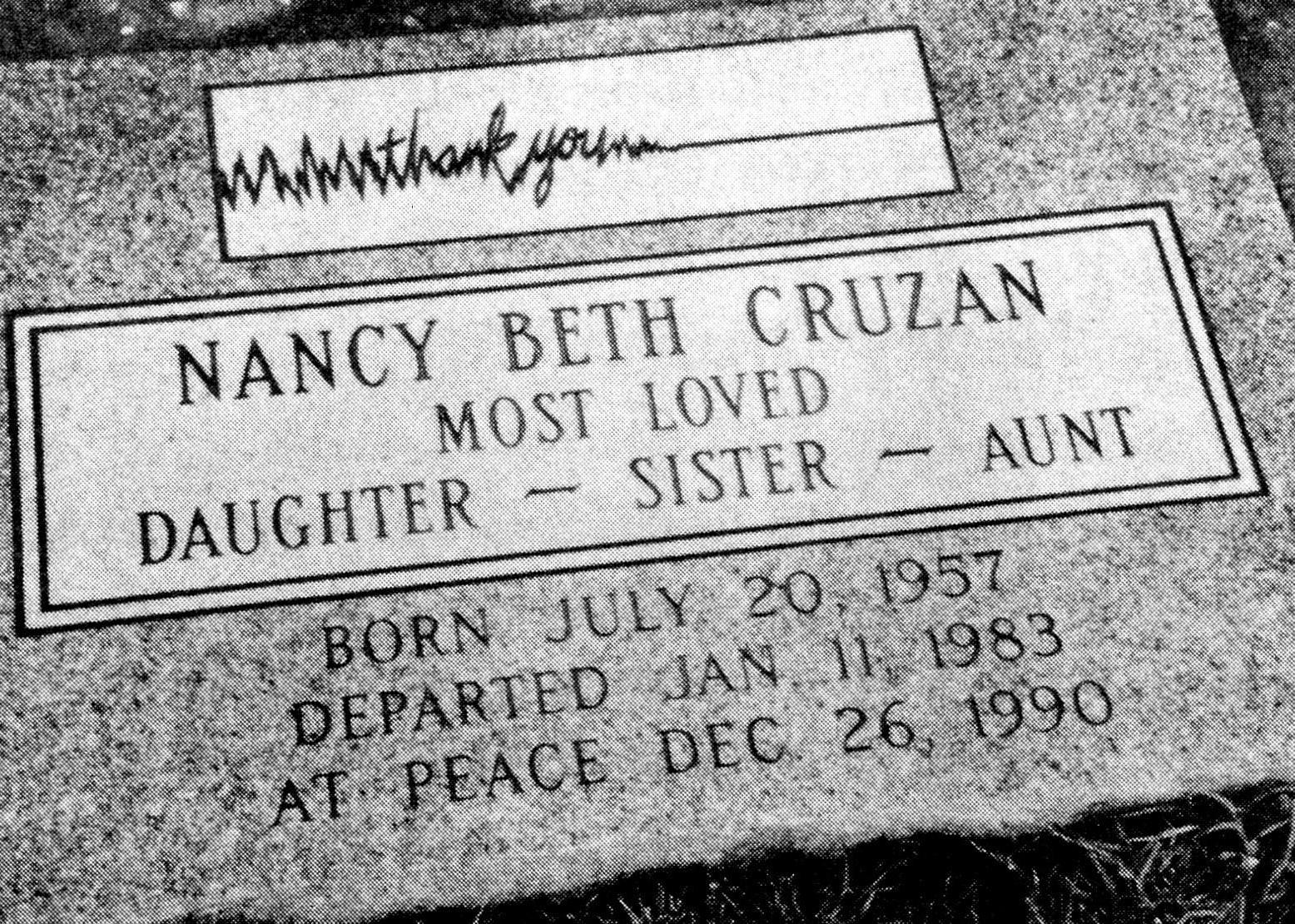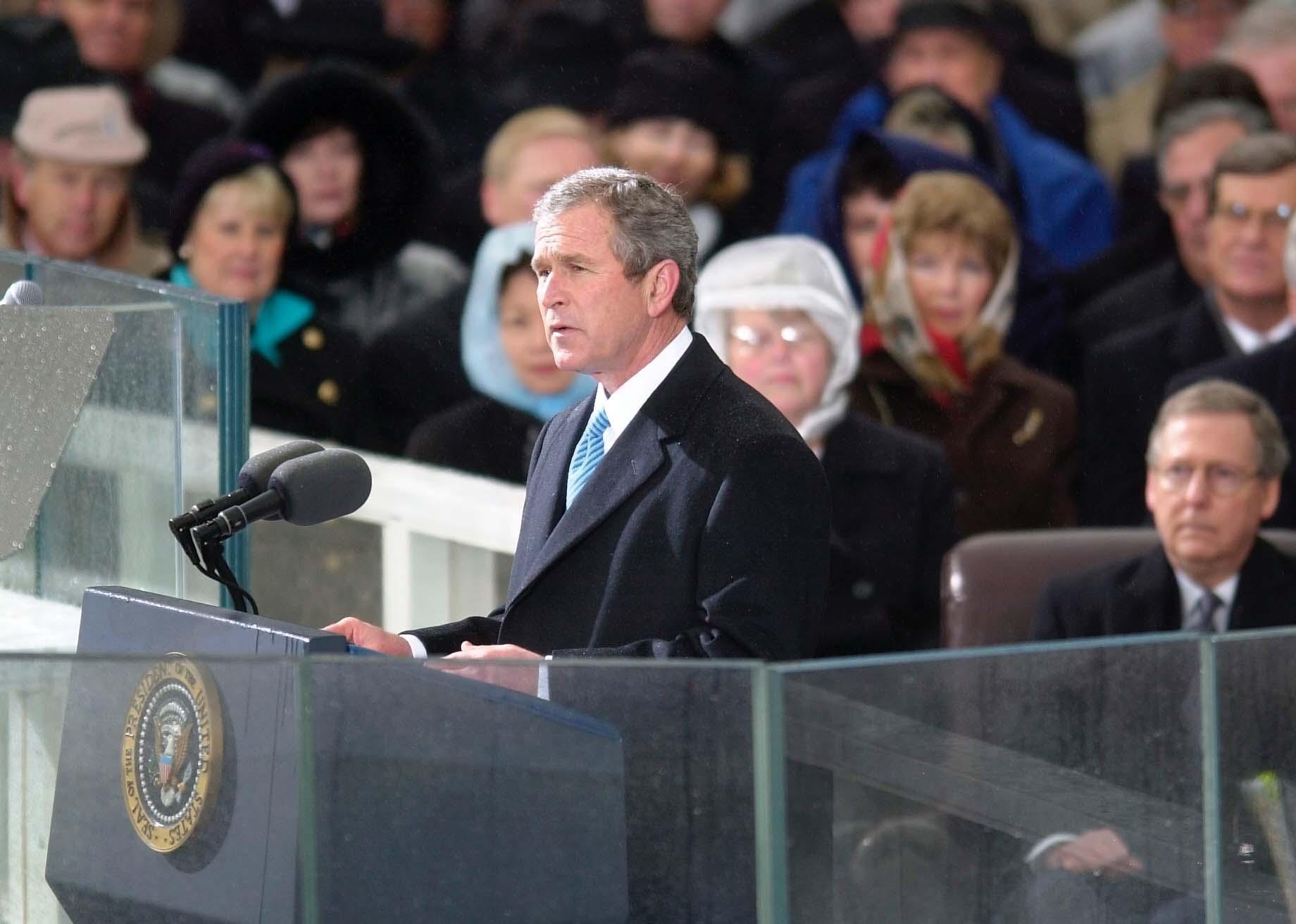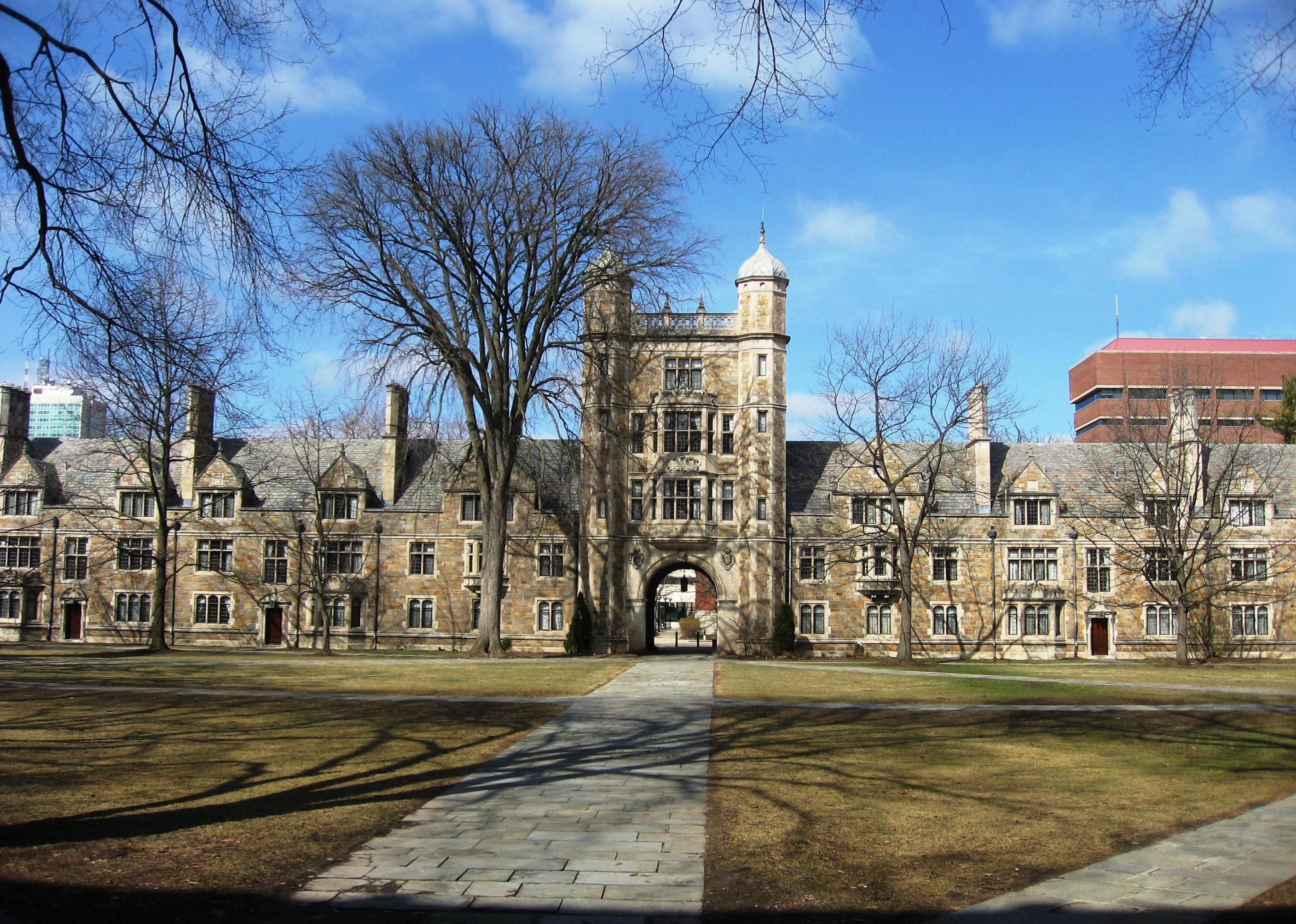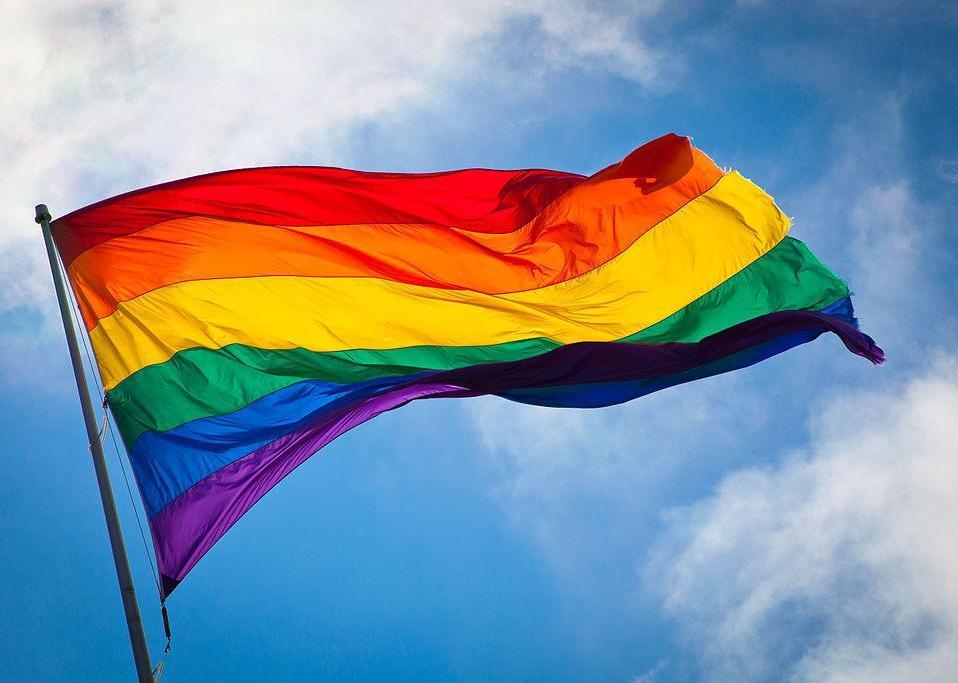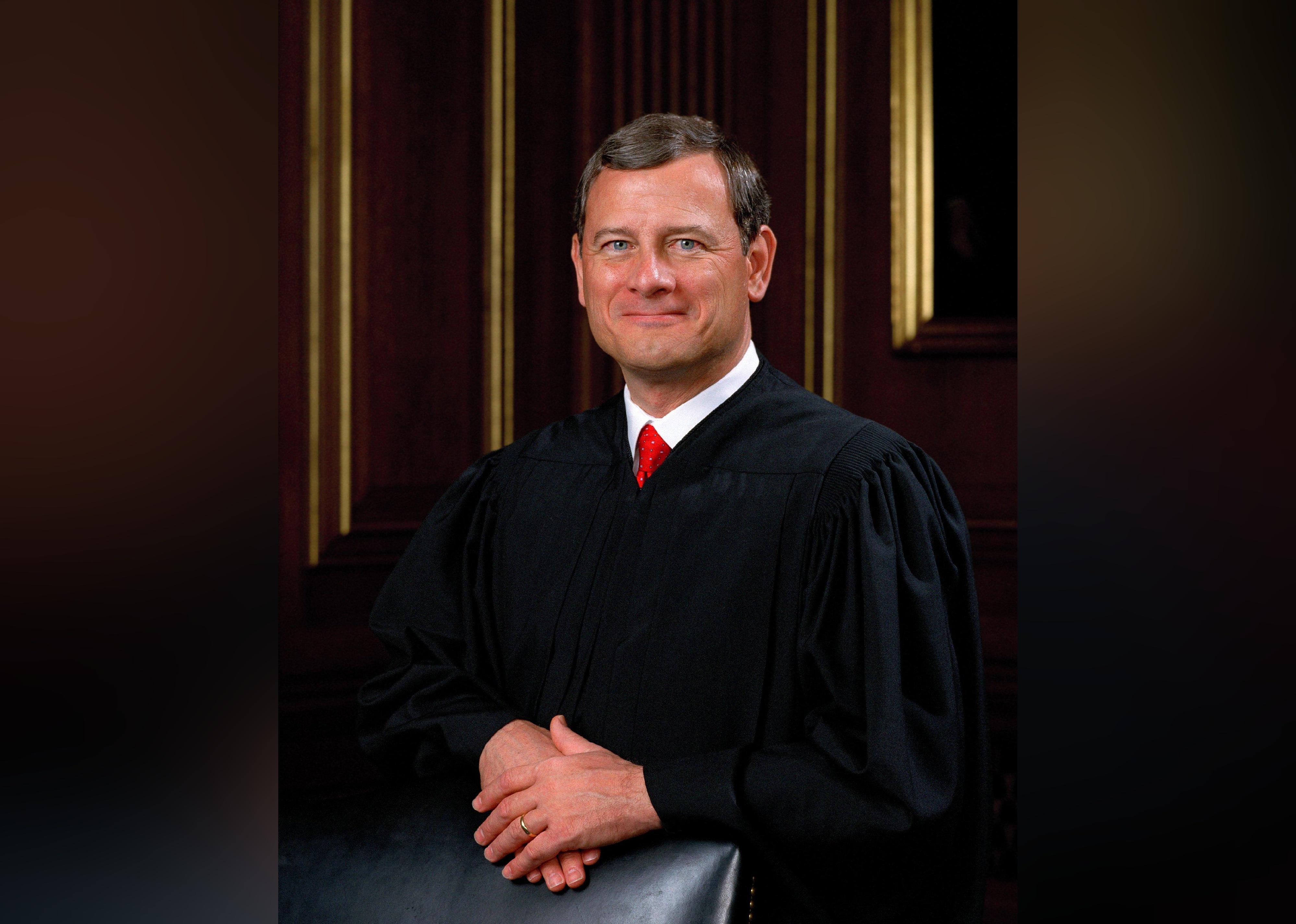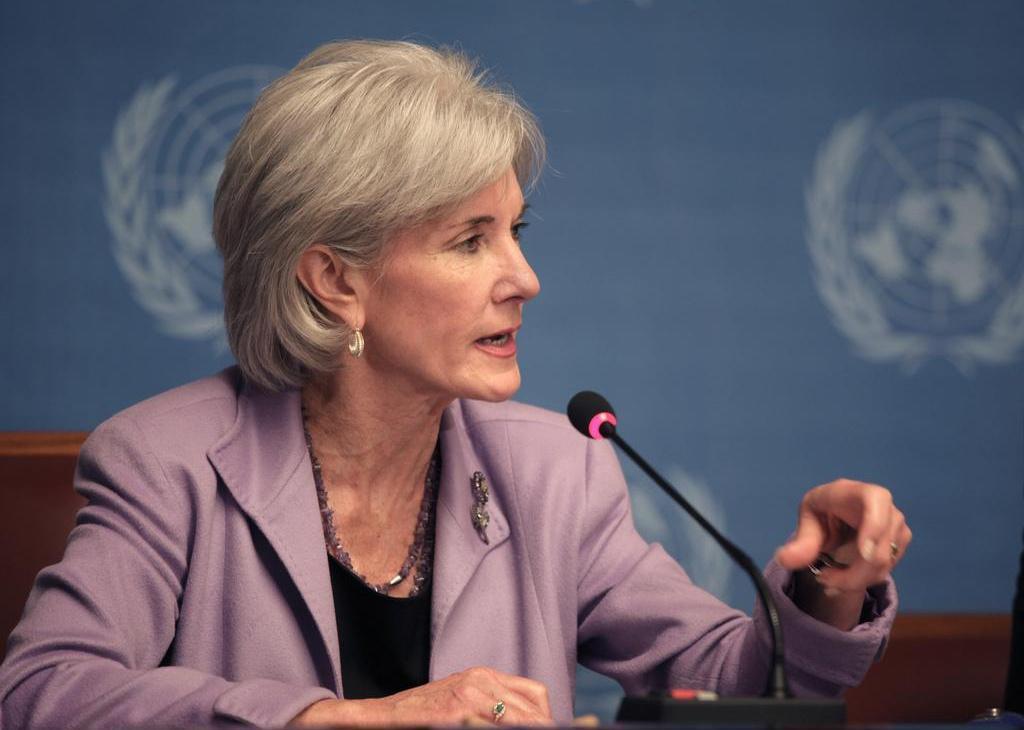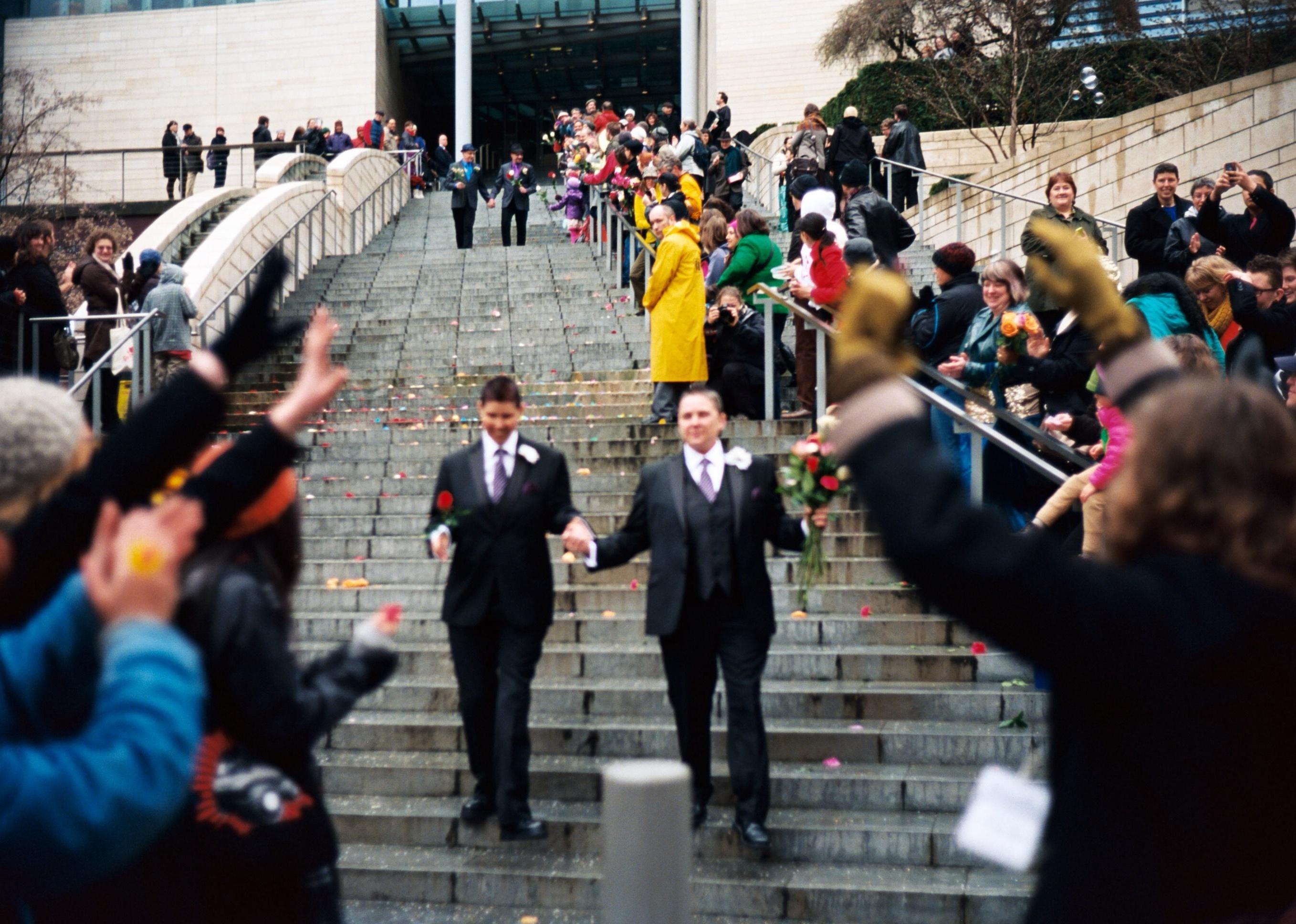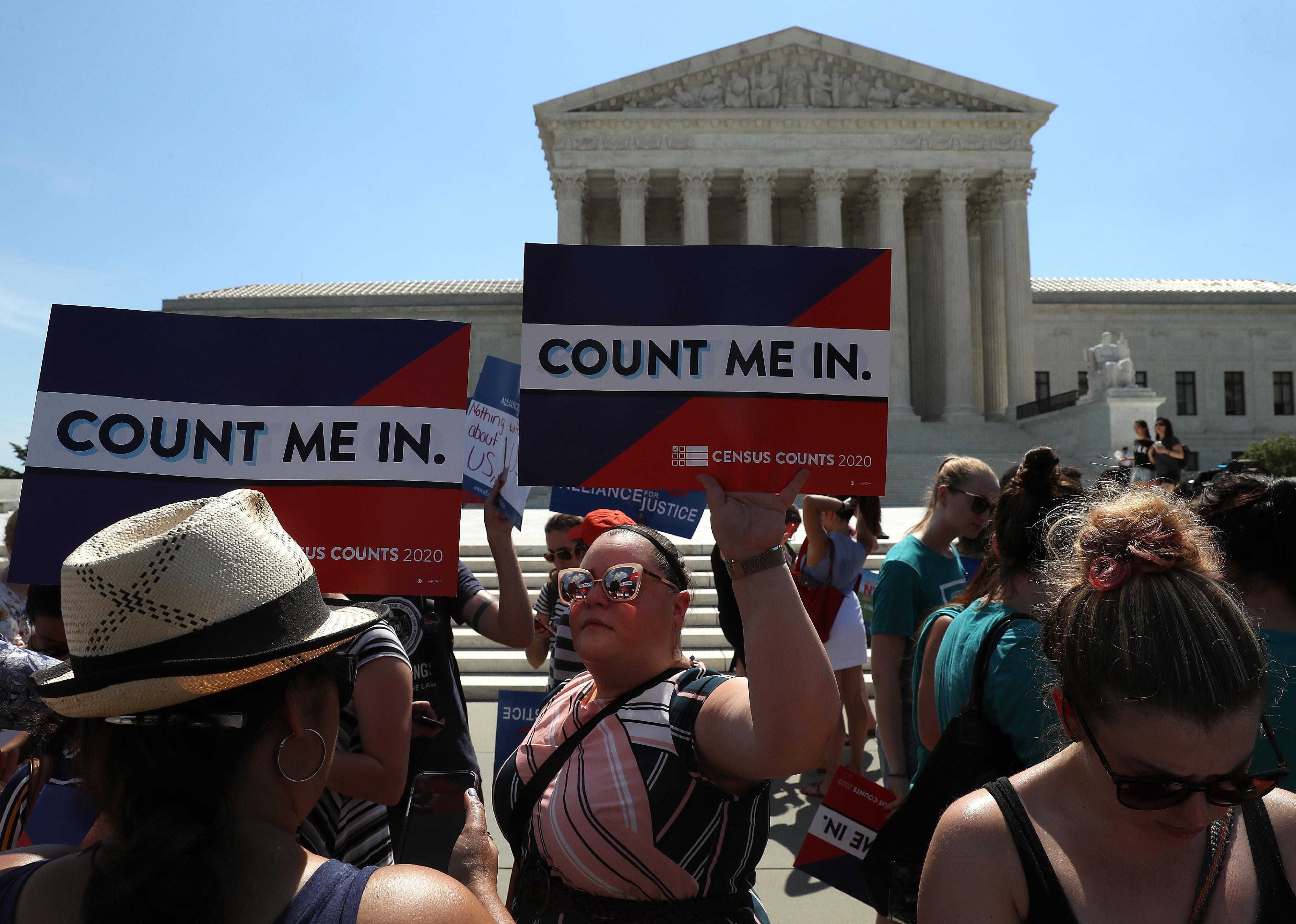Landmark Supreme Court cases and Chief Justices of the time
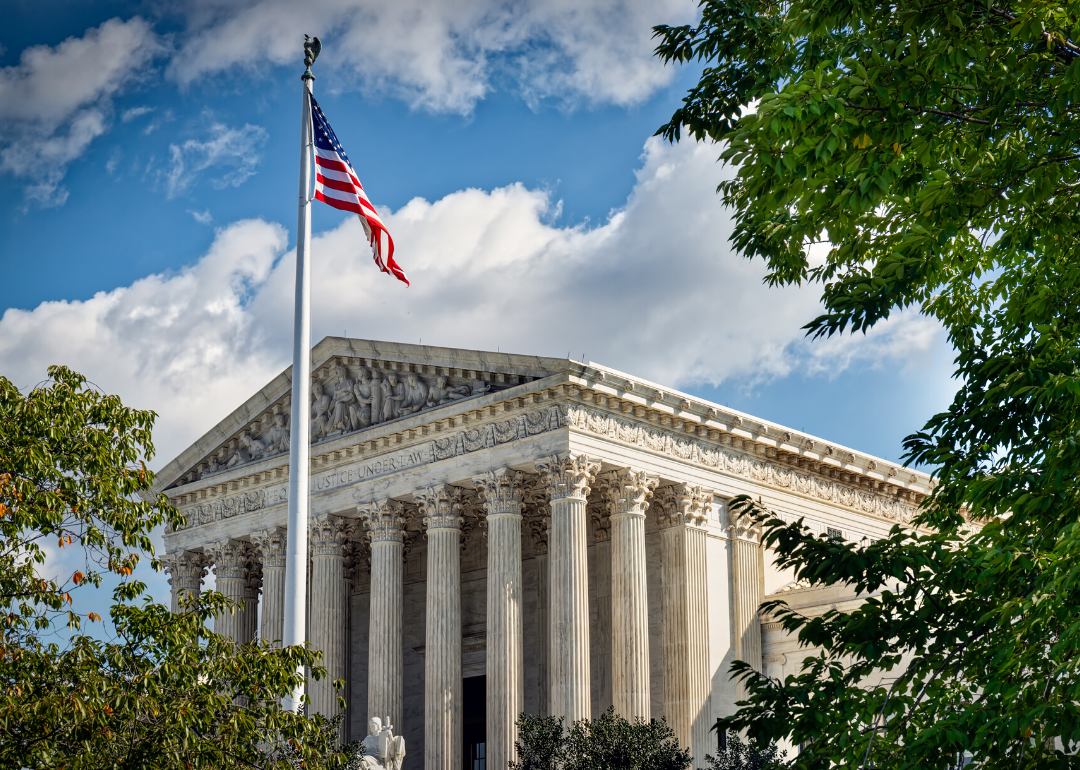
Canva
Landmark Supreme Court cases and Chief Justices of the time
A photo of the Supreme Court building with a blue sky in the background.
On June 29, 2023, the Supreme Court ruled in two cases—regarding Harvard and the University of North Carolina’s admissions practices—that using race as a factor for college admission violates the 14th Amendment Equal Protection Clause. With the ruling falling along ideological lines, this major decision ends race-based affirmative action in higher education.
Stacker used information from the law project Oyez, Justia’s U.S. Supreme Court Center, and news reports on Supreme Court decisions to develop a list of landmark Supreme Court cases.
Who sits on the Supreme Court matters because the federal court determines the enforcement of laws across the nation, and the judicial branch keeps a check on the executive and legislative branches. The 6-3 ruling on June 29 is expected to affect college admissions policies nationwide significantly. Other landmark rulings have alternatively awarded or rescinded an individual’s right to reproductive rights, required police officers to inform suspects of their rights, and allowed citizens the right to carry handguns for self-defense.
Read on to see how influential the court has been for over 200 years.
You may also like: Youngest and oldest presidents in U.S. history
![]()
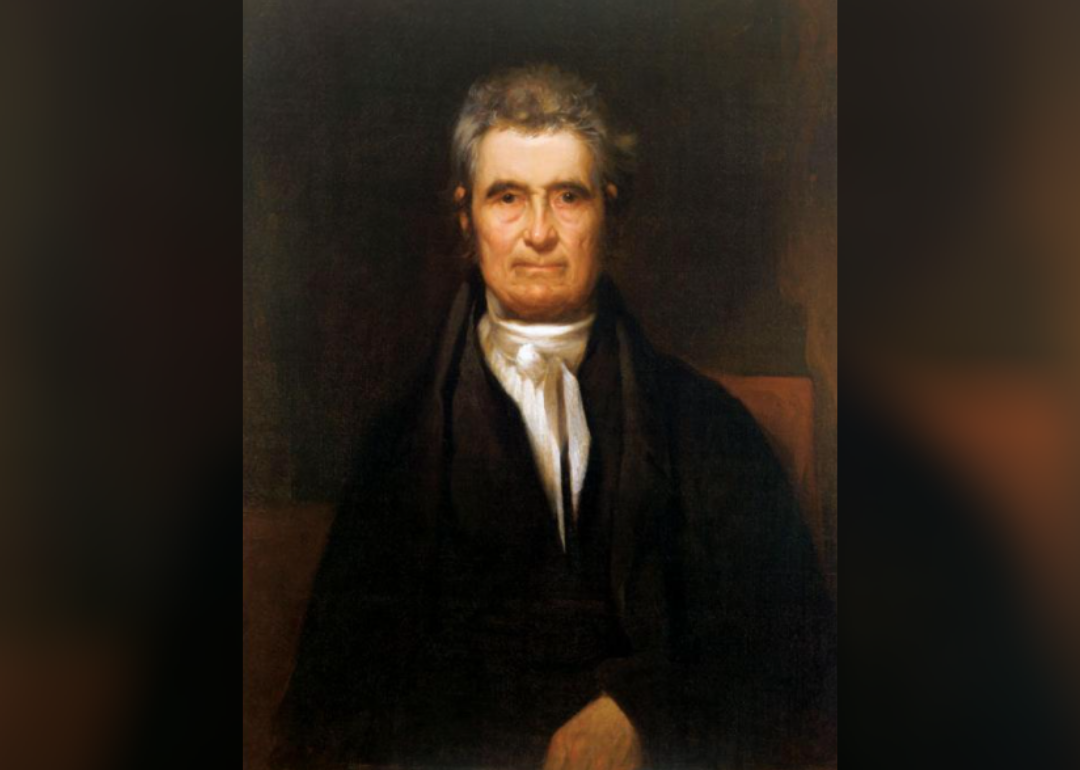
US Chief Justice John Marshall—Storkk // Wikimedia Commons
Marbury v. Madison
– Topic: judicial review
– Case decided on: Feb. 24, 1803
– Vote tally: 4-0 (unanimous) decision for Marbury
– Justices who concurred: John Marshall, William Paterson, Samuel Chase, Bushrod Washington
– Justices who dissented: none
– Chief justice at the time: John Marshall
– Majority and dissenting opinions
In this 1803 case, the Supreme Court established judicial review after then-Secretary of State James Madison failed to deliver a Justice of the Peace commission to William Marbury following Thomas Jefferson’s elections. The court held that the provision of the Judiciary Act of 1789 that allowed Madison to bring his complaint was unconstitutional.
Chief Justice John Marshall held that any law conflicting with the Constitution would be rendered “null and void.”
How this affects you: This decision made the Supreme Court what it is today, putting the judicial branch on equal footing with the legislative and executive branches. Judicial review is integral to the system of checks and balances.
Swatjester // Flickr
McCulloch v. Maryland
– Topic: implied powers of the federal government
– Case decided on: March 6, 1819
– Vote tally: 6-0 (unanimous) decision for McCulloch
– Justices who concurred: John Marshall, Bushrod Washington, William Johnson, H. Brockholst Livingston, Gabriel Duvall, Joseph Story
– Justices who dissented: none
– Chief justice at the time: John Marshall
– Majority and dissenting opinions
In 1816, Congress chartered the Second Bank of the United States. The state of Maryland tried to impose taxes on the bank. In a unanimous decision under Chief Justice John Marshall, the court held that the Necessary and Proper Clause gave Congress the authority to establish a national bank. The Court also held that states don’t have power over the federal government.
Chief Justice Marshall clarified the Necessary and Proper Clause, expanding the power of Congress to those implied—but not directly stated—by the Constitution.
How this affects you: This case gave more powers to the federal government and allowed for more interpretation of the Constitution that went beyond what the document specifically stated.
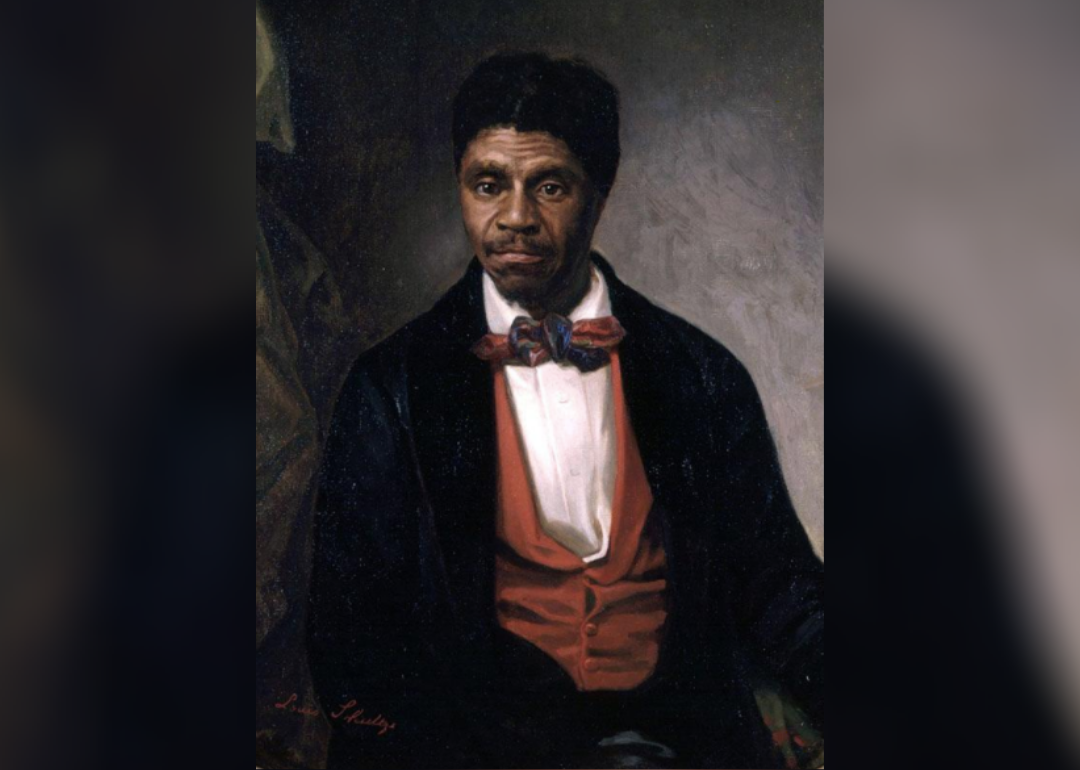
Dred Scott—Missouri Historical Society // Wikimedia Commons
Dred Scott v. Sandford
-Topic: legal emancipation and citizenship of enslaved people
– Case decided on: March 6, 1857
– Vote tally: 7-2 decision for Sanford
– Justices who concurred: Roger B. Taney, James M. Wayne, John Catron, Peter V. Daniel, Samuel Nelson, Robert C. Grier, John A. Campbell
– Justices who dissented: John McLean, Benjamin R. Curtis
– Chief justice at the time: Roger B. Taney
– Majority and dissenting opinions
In 1857, Dred Scott, once an enslaved person in Missouri, argued in court that he should be free after living in Illinois, where slavery wasn’t allowed. The court held that “a negro, whose ancestors were imported into [the U.S.], and sold as slaves,” whether an enslaved person or not, wasn’t an American citizen and couldn’t sue in federal court.
In an opinion written by Chief Justice Roger B. Taney, the court also ruled that they did not have the jurisdiction to ban slavery in U.S. territories and that the Fifth Amendment protected the rights of enslavers because enslaved people were considered property.
How this affects you: This is one of the cases that highlighted just how worthless some considered the lives of enslaved Americans in the 1800s. It speaks to the attitudes of the highest court in the land regarding whether enslaved people were people or “property.”
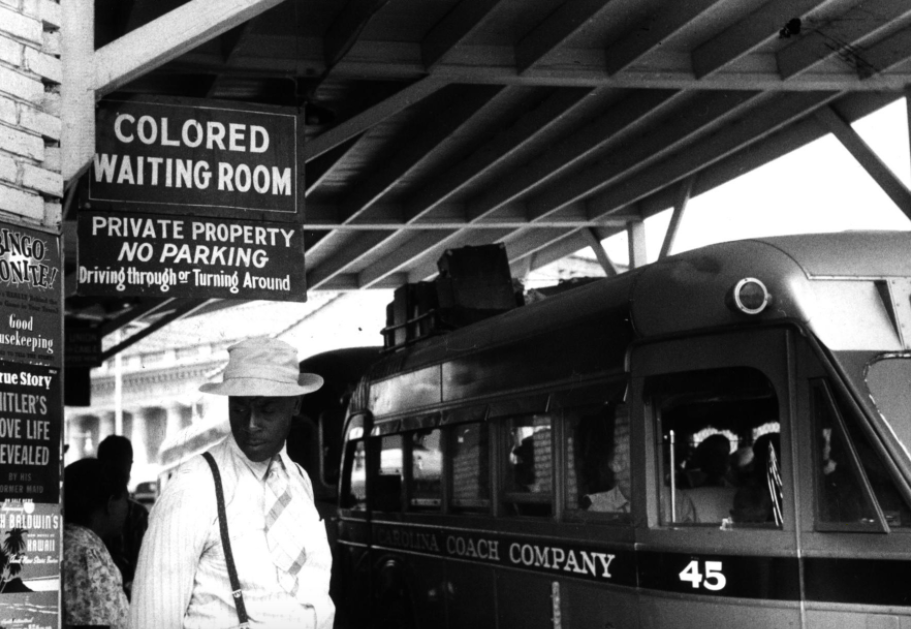
Jack Delano // Wikimedia Commons
Plessy v. Ferguson
– Topic: “separate but equal” doctrine
– Case decided on: May 18, 1896
– Vote tally: 7-1 decision for Ferguson
– Justices who concurred: Melville Fuller, Stephen J. Field, Horace Gray, Henry B. Brown, George Shiras Jr., Edward D. White, Rufus W. Peckham
– Justices who dissented: John M. Harlan
– Chief justice at the time: Melville Fuller
– Majority and dissenting opinions
Under the Separate Car Act, Louisiana required Black and white passengers to ride in different railroad cars. In 1892, Homer Plessy, considered Black but also seven-eighths Caucasian, challenged the act. Railroad companies didn’t like the policy either—they had to buy more cars. Plessy’s lawyers claimed the act violated the Thirteenth and Fourteenth Amendments, but he was convicted anyway.
Under Chief Justice Melville Fuller, the court upheld Plessy’s conviction, arguing that segregation imposed by the states was constitutional. Justice John Marshall Harlan dissented, saying that all citizens should have equal access to civil rights.
How this affects you: Even though the court overturned this ruling, its effects are still seen. Plessy v. Ferguson condoned segregation and allowed lawmakers and businesses to create inadequate facilities for Black Americans, even though they were considered “equal.” It made it easier to limit the rights of people based on race, even after the Civil War ended.
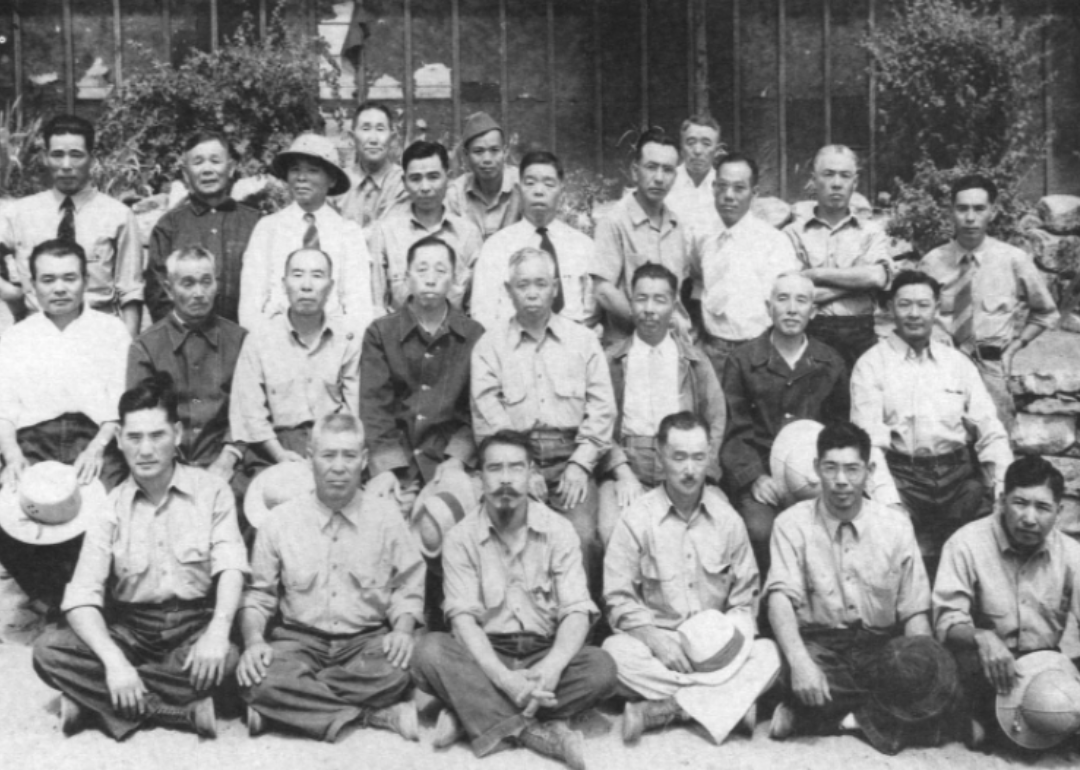
Japanese internees—U.S. Department of Justice // Wikimedia Commons
Korematsu v. United States
– Topic: internment of Japanese Americans during WWII
– Case decided on: Dec. 18, 1944
– Vote tally: 6-3 decision for United States
– Justices who concurred: Harlan F. Stone, Hugo Black, Stanley F. Reed, Felix Frankfurter, Robert H. Jackson, Wiley B. Rutledge
– Justices who dissented: Owen Roberts, William O. Douglas, Frank Murphy
– Chief justice at the time: Harlan F. Stone
– Majority and dissenting opinions
After the Japanese attack on Pearl Harbor during World War II, the U.S. government kept Japanese Americans in internment camps from 1942 to 1945. Japanese American Fred Korematsu, who stayed in his residence instead of going to the camps, was arrested and convicted for violating Executive Order 9066 to relocate. He argued the order violated the Fifth Amendment.
Citing Hirabayashi v. U.S., the Supreme Court decided in favor of the United States. Under Chief Justice Harlan Stone, the court decided the order wasn’t racist; it aimed to protect the U.S., particularly those on the West Coast.
The Justice Department issued a “confession of error” about the case in 2011, and the decision was the court formally repudiated it in 2018.
How this affects you: While both common people and the court have criticized the decision, it was able to promote the idea that during a time of war, different types of military action are acceptable if the action supposedly protects the safety of the United States.
1959 protest in Arkansas—Public Domain
Brown v. Board of Education
– Topic: segregation of public schools on the basis of race
– Case decided on: May 17, 1954
– Vote tally: 9-0 (unanimous) for Brown et. al
– Justices who concurred: Earl Warren, Hugo Black, Stanley F. Reed, Felix Frankfurter, William O. Douglas, Robert H. Jackson, Harold H. Burton, Tom C. Clark, Sherman Minton
– Justices who dissented: none
– Chief justice at the time: Earl Warren
– Majority and dissenting opinions
Plessy v. Ferguson wasn’t challenged until 1954 when the court ruled in Brown v. Board of Education that racial segregation in public schools was unconstitutional. Chief Justice Earl Warren delivered the opinion by a unanimous Court, which held that the “separate but equal” policy violated the Equal Protection Clause under the Fourteenth Amendment.
Warren, who became progressively more liberal as he aged, tried to write the opinion in a way he felt the general public could understand by incorporating information from social science studies.
How this affects you: This landmark case not only allowed students to go to the public schools they wanted regardless of their race, but struck down the notion that “separate but equal” wasn’t an inherently racist, segregatory tactic. It was an important win in the civil rights movement of the 20th century.
U.S. Army // Wikimedia Commons
Cooper v. Aaron
– Topic: federal court orders versus states’ rights
– Case decided on: Sept. 12, 1958
– Vote tally: 9-0 (unanimous)
– Justices who concurred: Earl Warren, Hugo Black, Felix Frankfurter, William O. Douglas, Harold H. Burton, Tom C. Clark, John M. Harlan II, William J. Brennan Jr., Charles E. Whittaker
– Justices who dissented: none
– Chief justice at the time: Earl Warren
– Majority and dissenting opinions
Some Arkansas officials refused to abide by the ruling in Brown v. Board of Education to integrate their schools in 1958. In a unanimous decision with a per curiam opinion—which means every judge wrote an opinion—under Chief Justice Earl Warren, the court held that it was unconstitutional to deprive Black students of equal protection under the law. Since Marbury v. Madison made the Supreme Court the ultimate law, the Brown decision bounded all states.
How this affects you: This ruling established and highlighted the Supreme Court’s power as the final say on all laws. It also started the conversation on not just federal rights versus state rights, but also state rights versus the power of the court.
Justice Earl Warren—Moshe Pridan // Wikimedia Commons
Mapp v. Ohio
– Topic: illegal police searches violating Fourth Amendment
– Case decided on: June 19, 1961
– Vote tally: 6-3 decision for Dollree Mapp
– Justices who concurred: Earl Warren, Hugo Black, William O. Douglas, Tom C. Clark, William J. Brennan Jr., Potter Stewart
– Justices who dissented: John M. Harlan II, Felix Frankfurter, Charles E. Whittaker
– Chief justice at the time: Earl Warren
– Majority and dissenting opinions
Dollree Mapp was convicted of possessing obscene materials after police confiscated them during an illegal search of her home. The court, under Chief Justice Earl Warren, held that evidence obtained during an illegal search and seizure violated the Fourth Amendment and was inadmissible in a state court.
How this affects you: This case was one of a series of cases that tested the limits of the Fourth Amendment. Mapp v. Ohio was an important win for criminal defense as it pressured law enforcement to obtain a warrant for all incriminating evidence to hold up in court.
Warren Supreme Court, 1953—Public Domain
Engel v. Vitale
– Topic: prayer in public schools
– Case decided on: June 25, 1962
– Vote tally: 6-1 decision for Engel
– Justices who concurred: Earl Warren, Hugo Black, William O. Douglas, Tom C. Clark, John M. Harlan II, William J. Brennan Jr.
– Justices who dissented: Potter Stewart
– Chief justice at the time: Earl Warren
– Majority and dissenting opinions
The New York State Board of Regents was challenged after it allowed the reciting of a voluntary prayer before the start of school. The Court ruled this was not a proper separation of church and state. Under Chief Justice Earl Warren, Justice Hugo L. Black authored the opinion that public schools cannot hold prayers because it violates the Establishment Clause.
How this affects you: This case made sure that public schools stayed secular, both by not imposing a certain religion on students and by not having voluntary prayer in these schools, which is still in effect today.
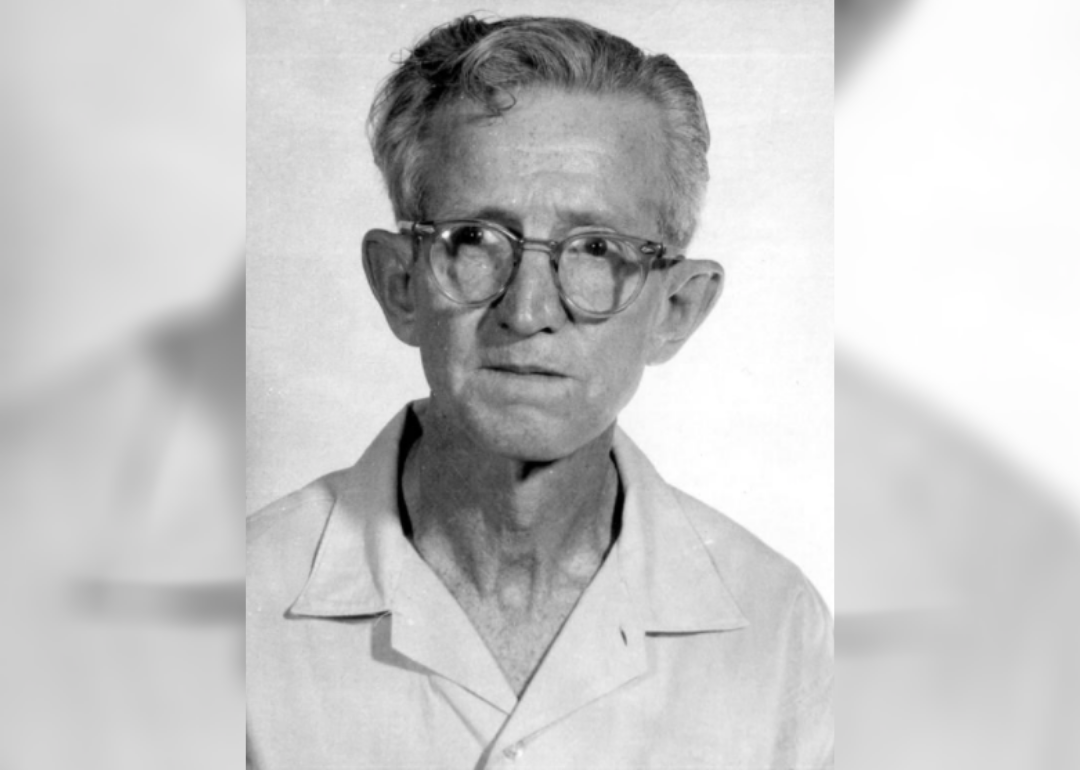
Clarence Earl Gideon—Public Record // Wikimedia Commons
Gideon v. Wainwright
– Topic: Sixth Amendment’s right to counsel in criminal cases
– Case decided on: March 18, 1963
– Vote tally: 9-0 (unanimous) decision for Clarence Earl Gideon
– Justices who concurred: Earl Warren, Hugo Black, William O. Douglas, Tom C. Clark, John M. Harlan II, William J. Brennan Jr., Potter Stewart, Byron White, Arthur Goldberg
– Justices who dissented: none
– Chief justice at the time: Earl Warren
– Majority and dissenting opinions
Clarence Earl Gideon was denied the right to an attorney after he was charged with felony breaking and entering. Florida law at the time only guaranteed state-appointed attorneys for capital cases. In the court under Chief Justice Earl Warren, Justice Hugo L. Black issued a unanimous opinion ruling that criminal defendants in state court have a right to appointed counsel if they can’t afford one under the Sixth Amendment and Fourteenth Amendment.
How this affects you: Like Miranda v. Arizona, this case definitively gives defendants of all felonies the right to an attorney. Now, if a defendant asks for an attorney, law enforcement obtains confessions, or a trial still happens without an attorney, defendants can argue improper representation and evidence or a trial’s decision can be discarded.
Joe Shlabotnik // flickr
New York Times Company v. Sullivan
– Topic: libel law about public figures
– Case decided on: March 9, 1964
– Vote tally: 9-0 (unanimous) decision for New York Times Company
– Justices who concurred: Earl Warren, Hugo Black, William O. Douglas, Tom C. Clark, John M. Harlan II, William J. Brennan Jr., Potter Stewart, Byron White, Arthur Goldberg
– Justices who dissented: none
– Chief justice at the time: Earl Warren
– Majority and dissenting opinions
After the New York Times printed an ad that asked for donations to help defend Dr. Martin Luther King Jr., a public figure accused the paper of libel because the ad featured minor inaccuracies. The Court, under Chief Justice Earl Warren, held that “actual malice”—knowing the facts are wrong and printing them anyway—must be found for a claim of libel or defamation to be sustained when a public figure is concerned.
How this affects you: This case expanded the First Amendment rights of journalists and media organizations. This libel law standard allowed media outlets to freely discuss politics and other hot topics more, worrying less about the consequences of being opinionated or potentially inaccurate. While this was a win for journalists, public figures now have the extra challenge of proving actual malice in trying to fix their tarnished reputations.
Gerald L. Nino // Wikimedia Commons
Miranda v. Arizona
– Topic: rights of a defendant taken into custody
– Case decided on: June 13, 1966
– Vote tally: 5-4 decision for Miranda
– Justices who concurred: Earl Warren, Hugo Black, William O. Douglas, William J. Brennan Jr., Abe Fortas
– Justices who dissented: Tom C. Clark, John M. Harlan II, Potter Stewart, Byron White
– Chief justice at the time: Earl Warren
– Majority and dissenting opinions
Police interrogated Ernesto Miranda in a rape and kidnapping case, obtaining a confession without informing Miranda that he could have a lawyer. The Supreme Court of Arizona held that police didn’t violate Miranda’s rights because he didn’t specifically ask for an attorney. Chief Justice Earl Warren and the court disagreed.
Justice Warren delivered the opinion, ruling that the interrogation violated Miranda’s Fifth Amendment rights. This decision led to the Miranda warning.
How this affects you: Miranda warnings, or the rights to remain silent, ask for an attorney, and have one appointed if necessary, allows for people in custody to confidently navigate the legal system and obtain the best outcome possible without getting pressured into confessing or incriminating themselves by law enforcement.
Ser_Amantio_di_Nicolaio // Wikimedia Commons
Loving v. Virginia
– Topic: interracial marriage
– Case decided on: June 12, 1967
– Vote tally: 9-0 (unanimous) decision for Loving
– Justices who concurred: Earl Warren, Hugo Black, William O. Douglas, Tom C. Clark, John M. Harlan II, William J. Brennan Jr., Potter Stewart, Byron White, Abe Fortas
– Justices who dissented: none
– Chief justice at the time: Earl Warren
– Majority and dissenting opinions
In 1958, Virginia residents Mildred Jeter, a Black woman, and Richard Loving, a white man, were married in the District of Columbia.
At the time, Virginia law prohibited interracial marriage. The couple was sentenced to a year in jail but had their sentence suspended as long as they left Virginia for 25 years. After the case reached the Supreme Court, the justices unanimously held that the Virginia law violated the Equal Protection Clause of the Fourteenth Amendment.
Chief Justice Earl Warren wrote that the Constitution meant “the freedom to marry, or not marry, a person of another race resides with the individual, and cannot be infringed by the State.”
How this affects you: This case was another win for the civil rights movement, as people could now freely marry who they wanted despite their skin color. It also helped decrease the state or federal government’s power over the institution of marriage.
Drew Stephens // Wikimedia Commons
Terry v. Ohio
– Topic: stop and frisk under Fourth Amendment
– Case decided on: June 10, 1968
– Vote tally: 8-1 decision
– Justices who concurred: Earl Warren, Hugo Black, John M. Harlan II, William J. Brennan Jr., Potter Stewart, Byron White, Abe Fortas, Thurgood Marshall
– Justices who dissented: William O. Douglas
– Chief justice at the time: Earl Warren
– Majority and dissenting opinions
Three men were stopped and searched by an officer who was not in uniform. One of the men, John Terry, was convicted of carrying a concealed weapon. Terry appealed, saying the search violated his Fourth Amendment right against unreasonable search and seizure. Under Chief Justice Earl Warren, the court held 8-1 that police could search someone if they had a “reasonable” suspicion.
How this affects you: The ruling led to the legality of the “stop and frisk” rule, which has disproportionately affected Black and Latino communities.
Justice Earl Warren—Public Record // Wikimedia Commons
Tinker v. Des Moines
– Topic: students’ freedom of speech and expression
– Case decided on: Feb. 24, 1969
– Vote tally: 7-2 decision for Tinker
– Justices who concurred: Earl Warren, William O. Douglas, William J. Brennan Jr., Potter Stewart, Byron White, Abe Fortas, Thurgood Marshall
– Justices who dissented: Hugo Black, John M. Harlan II
– Chief justice at the time: Earl Warren
– Majority and dissenting opinions
In 1965, Mary Beth Tinker, Christopher Eckhardt, and John Tinker wore black armbands to school in protest of the Vietnam War, and the school sent them home. The students—with the help of their parents—sued the school for violating their freedom of speech.
Under Chief Justice Earl Warren, the court held that students don’t lose their First Amendment rights just because they are at school. To justify restrictions on student speech, the school has to prove that the conduct would “materially and substantially interfere” with the school’s operation.
How this affects you: Schools still use the Tinker test today. Schools mainly meet the standard created in this case when students’ speech or expressions invades the rights of other students, especially regarding things like hate speech or bullying.
Lorie Shaull // Wikicommons
Roe v. Wade
– Topic: women’s right to have an abortion
– Case decided on: Jan. 22, 1973
– Vote tally: 7-2 decision for Jane Roe
– Justices who concurred: Warren E. Burger, William O. Douglas, William J. Brennan Jr., Potter Stewart, Thurgood Marshall, Harry Blackmun, Lewis F. Powell Jr.
– Justices who dissented: Byron White, William Rehnquist
– Chief justice at the time: Warren E. Burger
– Majority and dissenting opinions
In an issue still debated today, the court (of all-male justices) held that a woman’s right to an abortion fell within the right to privacy. The Fourteenth Amendment, which guarantees “equal protection of the laws,” protected reproductive rights. The ruling allowed women a legal abortion during the first trimester and defined different levels of state interest for the second and third trimesters.
Under Chief Justice Warren E. Burger, Justice Harry A. Blackmun wrote the Roe opinion. People remember Blackmun for his decisions concerning abortion, an issue that kept him on the court until the confirmation of Justice Ruth Bader Ginsburg.
How this affects you: While the court established nationwide reproductive rights and increased women’s rights, which included the right to have an abortion, many states have challenged this law and have worked to undermine it, either by limiting when a woman can get an abortion, imposing high fees on the procedure, or closing down clinics that can safely do the procedure. The 2022 decision of Dobbs v. Jackson Women’s Health Organization overturned the landmark ruling of Roe v. Wade.
Pubic Domain
US v. Nixon
– Topic: president’s executive privilege
– Case decided on: July 24, 1974
– Vote tally: 8-0 (unanimous) decision
– Justices who concurred: Warren E. Burger, William O. Douglas, William J. Brennan Jr., Potter Stewart, Byron White, Thurgood Marshall, Harry Blackmun, Lewis F. Powell Jr.
– Justices who dissented: none
– Chief justice at the time: Warren E. Burger
– Majority and dissenting opinions
During the Watergate scandal, President Richard Nixon claimed he was immune from subpoena and did not have to turn over audiotapes of conversations he recorded in the Oval Office due to executive privilege. He argued this gave him the right to withhold information from other government branches to preserve confidential communications within the executive branch or to secure the national interest.
The Court ruled against Nixon, ordering that he had to turn over the audiotapes.
Under Chief Justice Warren E. Burger—who authored a 31-page opinion—the court granted that there was a limited executive privilege in areas of military or diplomatic affairs. Still, it gave preference to “the fundamental demands of due process of law in the fair administration of justice.” Nixon resigned about two weeks after the release of the tapes.
How this affects you: This case limited the president’s power when concealing important information that was of public interest. It also showed that presidents are not immune to judicial matters and must still turn over any information if the court system has subpoenaed it.
Central High School—Nyttend // Wikimedia Commons
Goss v. Lopez
– Topic: students’ due process rights in their education
– Case decided on: Jan. 22, 1975
– Vote tally: 5-4 decision
– Justices who concurred: William O. Douglas, William J. Brennan Jr., Potter Stewart, Byron White, Thurgood Marshall
– Justices who dissented: Warren E. Burger, Harry Blackmun, Lewis F. Powell Jr., William Rehnquist
– Chief justice at the time: Warren E. Burger
– Majority and dissenting opinions
Without a hearing, school principals suspended nine students from two high schools and one junior high school in Columbus, Ohio. The principal’s actions—while legal under Ohio law—were challenged, and a federal court found that the principal had violated the students’ rights.
Under Chief Justice Warren E. Burger, the Court sided with the students, holding that Ohio had to recognize the students’ rights to an education under the Due Process Clause of the Fourteenth Amendment. The Court held that public school students should be given notice and a hearing if school officials want to suspend them.
How this affects you: This is another case that uplifted student rights and adapted the due process system to education. School administrators cannot just expel or suspend students for any reason without an investigation, as all students are entitled to an education.
Tony Webster // Flickr
Regents of the University of California v. Bakke
– Topic: use of affirmative action in higher education admissions decisions
– Case decided on: June 26, 1978
– Vote tally: Multiple decisions
– Justices who concurred: Warren E. Burger, William J. Brennan Jr., Potter Stewart, Byron White, Thurgood Marshall, Harry Blackmun, Lewis F. Powell Jr., William Rehnquist, John P. Stevens
– Chief justice at the time: Warren E. Burger
– Majority and dissenting opinions
Although he was more than qualified, Allan Bakke, a white man, was rejected both times he applied to the University of California Medical School at Davis. Bakke argued he the school did not admit him because he was white. The school reserved 16 places in each entering class of 100 for “qualified” minorities as part of the university’s affirmative action program to address previous unfair minority exclusions from the medical profession.
Under Chief Justice Warren E. Burger, the Court decided in favor of Bakke. Still, it held that schools could use affirmative action policies by considering race as part of the application process.
How this affects you: Affirmative action is still in play, but race cannot be the only disqualifying factor for admissions to higher education. If someone like Bakke exceeds all of the necessary qualifications and is just not admitted due to his skin color, there are grounds for an appeal.

Canva
New Jersey v T.L.O.
– Topic: Fourth Amendment application to searches in public schools
– Case decided on: Jan. 15, 1985
– Vote tally: 6-3 decision for New Jersey
– Justices who concurred: Warren E. Burger, Byron White, Harry Blackmun, Lewis F. Powell Jr., William Rehnquist, Sandra Day O’Connor
– Justices who dissented: William J. Brennan Jr., Thurgood Marshall, John P. Stevens
– Chief justice at the time: Warren E. Burger
– Majority and dissenting opinions
T.L.O., a high school student, was sentenced as a juvenile to one-year probation after school officials found marijuana in her purse while they were looking for cigarettes. She appealed, claiming the search violated her Fourth Amendment protection from unreasonable search and seizure. The New Jersey Superior Court agreed with T.L.O, holding that the Fourth Amendment’s exclusionary rule applies to searches and seizures conducted by school officials in public schools.
The Supreme Court, under Chief Justice Warren E. Burger, overturned the New Jersey decision, holding that school officials had reasonably searched the student’s purse under the Fourth Amendment.
The court also held that school officials could search a student without a warrant or probable cause because students have a reduced expectation of privacy at school.
How this affects you: The case both took away from students’ rights in schools and helped establish a precedent for the “reasonable expectation of privacy” prong often used in Fourth Amendment cases today. School officials can search a student and their belongings if they believe the student may have committed a crime or is about to commit one, but the school does not have to prove probable cause for this belief.
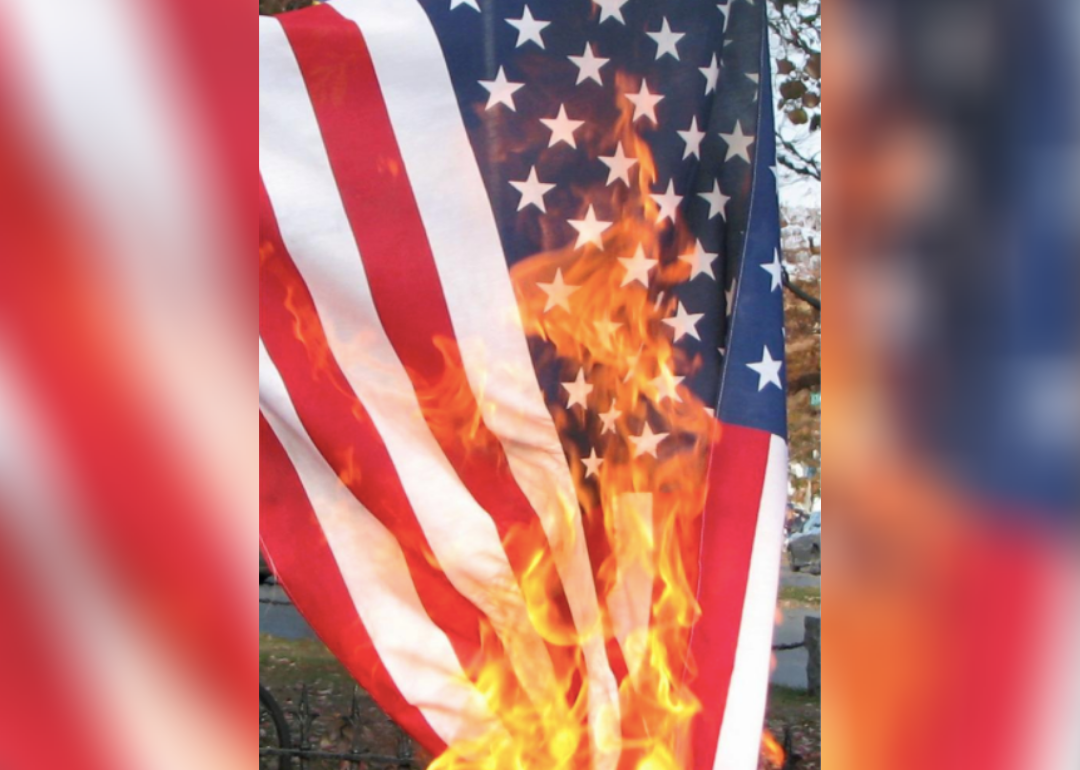
Jennifer Parr // Wikimedia Commons
Texas v. Johnson
– Topic: burning US flag as a form of expression
– Case decided on: June 21, 1989
– Vote tally: 5-4 decision for Johnson
– Justices who concurred: William J. Brennan Jr., Thurgood Marshall, Harry Blackmun, Antonin Scalia, Anthony Kennedy
– Justices who dissented: William Rehnquist, Byron White, John P. Stevens, Sandra Day O’Connor
– Chief justice at the time: William Rehnquist
– Majority and dissenting opinions
Gregory Lee Johnson burned an American flag in protest outside of the 1984 Republican National Convention. Texas law at the time made flag desecration illegal. Under Chief Justice William Rehnquist (who dissented), the court held that flag burning should be a form of “symbolic speech” protected by the First Amendment. The court also held that the government couldn’t restrict speech and ideas because some parts of society find them offensive.
How this affects you: As a result of the court ruling, lawmakers have tried to impose a law that would criminalize burning the flag, whether as a sign of protest or expression, but this has been unsuccessful and sometimes ends with even more flag-burning cases. First Amendment protections have seldom been curtailed, but instead increased.
Wellcome Images // Wikimedia Commons
Cruzan v. Director, Missouri Department of Health
– Topic: family terminating life support for an individual against state’s wishes
– Case decided on: June 25, 1990
– Vote tally: 5-4 decision
– Justices who concurred: William Rehnquist, Byron White, Sandra Day O’Connor, Antonin Scalia, Anthony Kennedy
– Justices who dissented: William J. Brennan Jr., Thurgood Marshall, Harry Blackmun, John P. Stevens
– Chief justice at the time: William Rehnquist
– Majority and dissenting opinions
After a car accident, Nancy Beth Cruzan was in a “persistent vegetative state.” Missouri state officials wouldn’t allow Cruzan’s parents to take her off an artificial feeding tube without court approval. It was the first right-to-die case presented to the court.
The Court ruled that individuals have the right to refuse medical treatment, but that does not extend to incompetent persons who cannot make that decision for themselves. Without “clear and convincing” evidence that Cruzan wanted to die, her parents couldn’t end life support.
How this affects you: The decision, made under Chief Justice William Rehnquist, spurred many states to adopt advance directive laws allowing patients to give instructions about their end-of-life decisions if they become incapacitated.
Bush 2001 Inauguration—Public Domain
Bush v. Gore
– Topic: Florida recount in the 2000 presidential election
– Case decided on: Dec. 12, 2000
– Vote tally: Multiple decisions for George W. Bush
– Justices who concurred: William Rehnquist, John P. Stevens, Sandra Day O’Connor, Antonin Scalia, Anthony Kennedy, David Souter, Clarence Thomas, Ruth Bader Ginsburg, Stephen Breyer
– Chief justice at the time: William Rehnquist
– Majority and dissenting opinions
In the 2000 presidential election, Vice President Al Gore, who ran as a Democratic candidate for president, contested the voting results in Florida. On Dec. 8, 2000, the Florida Supreme Court ordered the Circuit Court in Leon County to hand-count 9,000 contested ballots from Miami-Dade County. Then-Gov. George W. Bush requested that the U.S. Supreme Court review the matter.
The Supreme Court ruled in favor of Bush, holding that the Florida recount was unconstitutional because the Equal Protection Clause guarantees voters that their ballots cannot be devalued by “later arbitrary and disparate treatment.” Chief Justice William Rehnquist argued that the Florida recount violated the Constitution because the Florida Supreme Court’s decision had created new election law, which only the state legislature may do.
How this affects you: The case, often considered a singular ruling and not a precedent, has been frequently cited regarding legal questions about elections. People criticized the court for getting involved in politics this way. And mass media caused this case to be one of the most publicized court cases, which begs the question of how much public opinion can sway certain SCOTUS decisions.
University of Michigan—Andrew Horne // Wikimedia Commons
Grutter v. Bollinger
– Topic: use of racial preferences in student admissions
– Case decided on: June 23, 2003
– Vote tally: 5-4 decision for Bollinger
– Justices who concurred: John P. Stevens, Sandra Day O’Connor, David Souter, Ruth Bader Ginsburg, Stephen Breyer
– Justices who dissented: William Rehnquist, Antonin Scalia, Anthony Kennedy, Clarence Thomas
– Chief justice at the time: William Rehnquist
– Majority and dissenting opinions
Michigan resident Barbara Grutter, a white woman, applied for admission to the University of Michigan Law School in 1997. The school denied Grutter’s application despite her high GPA and LSAT score. The law school admitted that race was a factor in their admissions decisions because the school had a “compelling interest in achieving diversity among its student body.”
Under Chief Justice William Rehnquist, the court held that the Equal Protection Clause does not prevent the law school’s limited use of race when factoring in which students to admit.
Justice Sandra Day O’Connor wrote, “[I]n the context of its individualized inquiry into the possible diversity contributions of all applicants, the Law School’s race-conscious admissions program does not unduly harm non-minority applicants.”
How this affects you: Unlike the Bakke case, Grutter had less standing because the University of Michigan used a holistic process to consider its law school candidates. Many schools have adopted this holistic approach to admissions, rather than looking at just grades and test scores, to produce a diverse student population filled with students from different backgrounds and with various talents. It also maintained that affirmative action in admissions processes is legal, as that is just one of many aspects considered when looking at a potential student.
Skeezix1000 // Wikimedia Commons
Lawrence v. Texas
– Topic: sexual intimacy between same-sex couples
– Case decided on: June 26, 2003
– Vote tally: 6-3 decision for Lawrence
– Justices who concurred: John P. Stevens, Sandra Day O’Connor, Anthony Kennedy, David Souter, Ruth Bader Ginsburg, Stephen Breyer
– Justices who dissented: William Rehnquist, Antonin Scalia, Clarence Thomas
– Chief justice at the time: William Rehnquist
– Majority and dissenting opinions
After a report of gunshots, Houston police entered a home and found two men engaging in a consensual sex act. The men were arrested and convicted of violating a Texas statute that banned such acts between those of the same sex. The State Court of Appeals held that the statute was not unconstitutional, citing Bowers v. Hardwick, which held that there was no constitutional right to sodomy.
Under Chief Justice William Rehnquist, who himself dissented, the court overturned Bowers v. Hardwick. The court struck down the Texas statute that made it illegal for two people of the same sex to engage in certain intimate sexual conduct. Gay rights advocates championed the case.
How this affects you: This case was a win for both privacy and the LGBTQ+ community, as adults who engage in consensual intimate acts have a reasonable expectation of privacy in their homes, no matter the race or sexual orientation of the people involved.
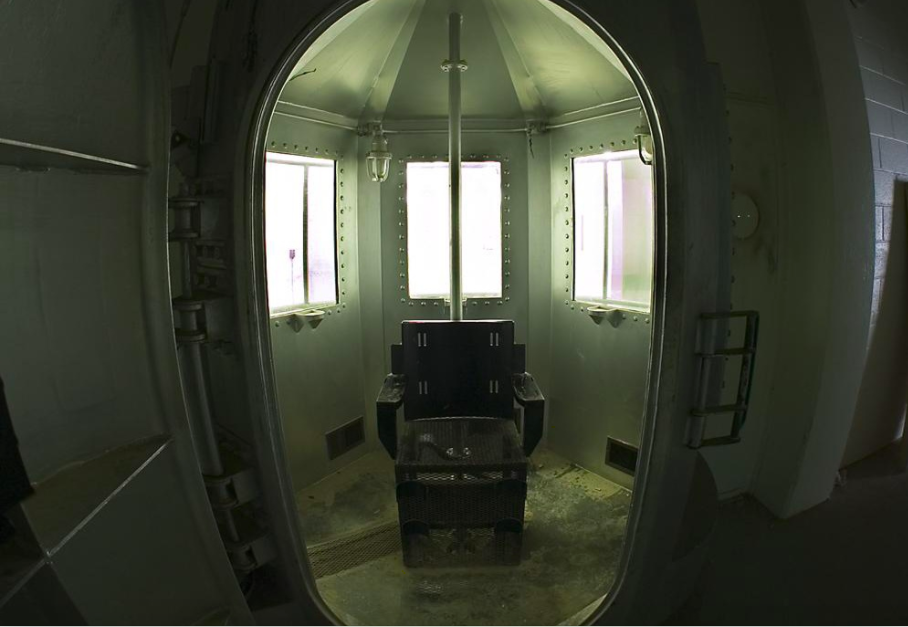
Shelka04 // Wikimedia Commons
Roper v. Simmons
– Topic: death penalty for minors
– Case decided on: March 1, 2005
– Vote tally: 5-4 decision
– Justices who concurred: John P. Stevens, Anthony Kennedy, David Souter, Ruth Bader Ginsburg, Stephen Breyer
– Justices who dissented: William Rehnquist, Sandra Day O’Connor, Antonin Scalia, Clarence Thomas
– Chief justice at the time: William Rehnquist
– Majority and dissenting opinions
Christopher Simmons was sentenced to death at age 17 after a murder conviction. The court overturned Stanford v. Kentucky, which held that executing a minor was not unconstitutional. Under Chief Justice William Rehnquist (who dissented), the court held that times had changed and executing a minor was now “cruel and unusual punishment.”
How this affects you: Roper v. Simmons was important to show the difference between a juvenile committing a crime and an adult committing a crime, which the punishment should reflect. Juveniles are not developed to the degree that adults are, which is why there are separate juvenile facilities and criminal records for minors not tried as adults.
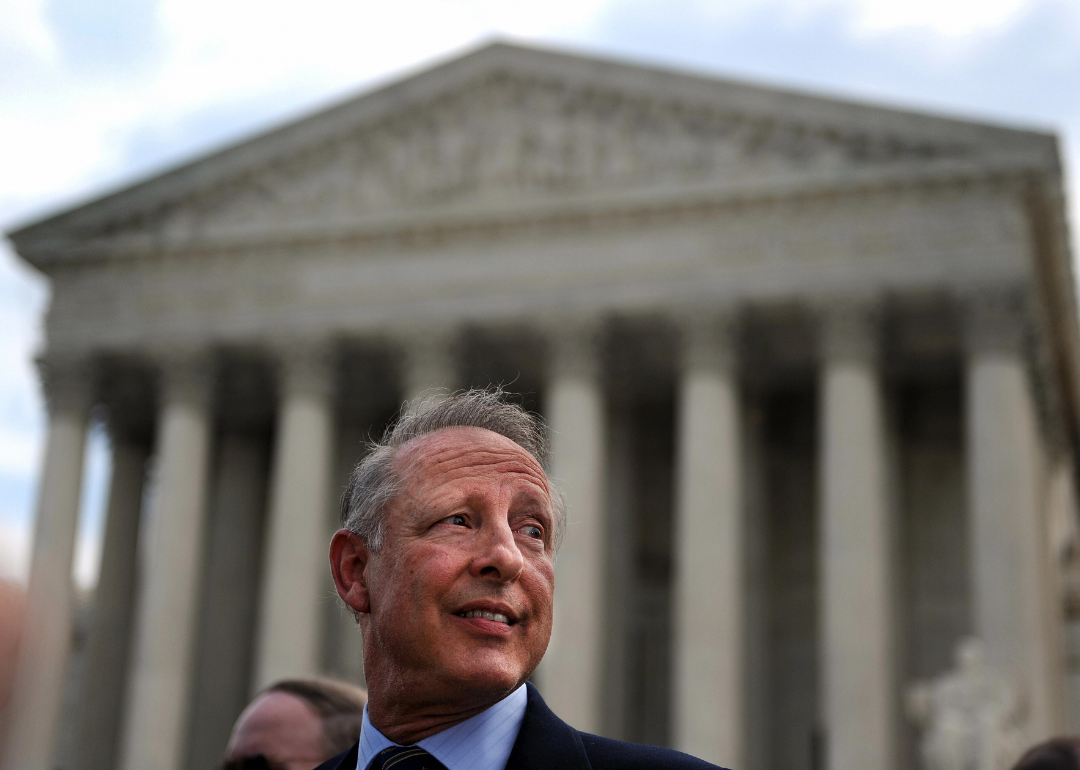
TIM SLOAN/AFP via Getty Images
District of Columbia v. Heller
– Topic: what constitutes a violation of the Second Amendment
– Case decided on: June 26, 2008
– Vote tally: 5-4 decision
– Justices who concurred: John Roberts, Antonin Scalia, Anthony Kennedy, Clarence Thomas, Samuel Alito
– Justices who dissented: John P. Stevens, David Souter, Ruth Bader Ginsburg, Stephen Breyer
– Chief justice at the time: John Roberts
– Majority and dissenting opinions
Washington D.C. police officer Heller could carry a handgun while on duty, but D.C. law banned the registration of handguns for personal use. Heller sued the District of Columbia.
The court held that requiring handguns to be nonfunctional in the home—and banning their registration—violated the Second Amendment and didn’t allow people to protect themselves at home. The case established the precedent used in McDonald v. Chicago, which determined that Chicago’s handgun ban violated an individual’s right to keep and bear arms for self-defense.
How this affects you: This case has been widely criticized by modern proponents of gun laws, especially in an era when gun violence and mass shootings have become significantly more common. While this case did not completely eliminate all gun regulations, it has often been used as an example and a precedent for why a citizen’s Second Amendment right to bear arms should not be limited.
Justice John Roberts—Public Domain
Citizens United v. FEC
– Topic: political campaign donations as a form of free speech
– Case decided on: Jan. 21, 2010
– Vote tally: 5-4 decision for Citizens United
– Justices who concurred: John Roberts, Antonin Scalia, Anthony Kennedy, Clarence Thomas, Samuel Alito
– Justices who dissented: John P. Stevens, Ruth Bader Ginsburg, Stephen Breyer, Sonia Sotomayor
– Chief justice at the time: John Roberts
– Majority and dissenting opinions
Citizens United, a conservative non-partisan organization, sought an injunction against the Federal Election Committee to prevent the application of the Bipartisan Campaign Reform Act to its film about Hillary Clinton. Under Chief Justice John Roberts, the court overturned Austin v. Michigan Chamber of Commerce and portions of McConnell v. FEC, holding that political speech (and funding) cannot be limited, even if it’s from a corporation.
How this affects you: The Citizens United decision remains controversial 10 years after it passed. The case effectively allowed corporations and wealthy individuals to put large amounts of money into politics through the use of Super PACs and dark money, offering them more power to influence a political campaign or candidate.
Kathleen Sebelius—United States Mission Geneva // Flickr
National Federation of Independent Business v. Sebelius
– Topic: constitutionality of the Patient Protection and Affordable Care Act
– Case decided on: June 28, 2012
– Vote tally: Multiple decisions
– Justices who concurred: John Roberts, Antonin Scalia, Anthony Kennedy, Ruth Bader Ginsburg, Stephen Breyer, Samuel Alito, Sonia Sotomayor, Elena Kagan
– Chief justice at the time: John Roberts
– Majority and dissenting opinions
Congress passed the Patient Protection and Affordable Care Act, commonly known as Obamacare, in 2010. Part of the ACA included an “individual mandate.” The administration amended the tax code to require people to purchase minimum health care coverage or pay penalties. The ACA also required states to accept an expansion of Medicaid to receive federal funds for the program and added an employer mandate to obtain health coverage for employees.
The Court, under Chief Justice John Roberts, upheld the individual mandate, reasoning that the individual mandate was a reasonable tax. The Court also held that the Medicaid expansion was a valid exercise of Congress’ spending power.
How this affects you: The decision was essential to keep the Affordable Care Act going, providing insurance to millions of Americans. It also allowed the government to effectively penalize Americans who did not have health insurance by framing it as a tax. However, this was harmful to many middle-class Americans who struggled to pay the monthly penalty.
Dennis Bratland // Wikimedia Commons
Obergefell v. Hodges
– Topic: same-sex marriage
– Case decided on: June 26, 2015
– Vote tally: 5-4 decision for Obergefell
– Justices who concurred: Anthony Kennedy, Ruth Bader Ginsburg, Stephen Breyer, Sonia Sotomayor, Elena Kagan
– Justices who dissented: John Roberts, Antonin Scalia, Clarence Thomas, Samuel Alito
– Chief justice at the time: John Roberts
– Majority and dissenting opinions
Same-sex couples in Ohio, Michigan, Kentucky, and Tennessee challenged their state’s laws against same-sex marriages. The Court held that laws banning or not recognizing legal same-sex marriage violate the Due Process Clause in the Fourteenth Amendment. The Court ruled that the Equal Protection Clause extends the fundamental right to marry to all couples.
Chief Justice John Roberts wrote a dissent arguing that since the Constitution does not directly address same-sex marriage, the court can’t decide whether states have to recognize or issue licenses for them. Justice Antonin Scalia and Justice Clarence Thomas also said the court did not have jurisdiction over what they viewed as a state matter.
How this affects you: This case was groundbreaking for LGBTQ+ rights, as the decision made laws banning or limiting same-sex marriage in some states unconstitutional. While critics of the case did not like the court impeding on states’ rights, it was still a major decision that officially recognized and normalized homosexuality after decades of not doing so.
Mark Wilson // Getty Images
Department of Commerce v. New York
– Topic: citizenship question on 2020 Census
– Case decided on: June 27, 2019
– Vote tally: Multiple decisions
– Justices who concurred: John Roberts, Clarence Thomas, Ruth Bader Ginsburg, Stephen Breyer, Samuel Alito, Sonia Sotomayor, Elena Kagan, Neil Gorsuch, Brett Kavanaugh
– Chief justice at the time: John Roberts
– Majority and dissenting opinions
In 2018, the secretary of commerce proposed adding back a citizenship question to the 2020 Census. This was argued in the lower courts due to the fact that some households may not respond if they live with someone who is not a citizen. While the court issued several decisions regarding this case, the district court from which the case was born blocked the secretary from reinstating the question, but it is still up for consideration in the future.
How this affects you: The citizenship question could have negative impacts on census response rates if it does get added in the future. This could cause some districts to be redrawn in ways not indicative of the actual population.
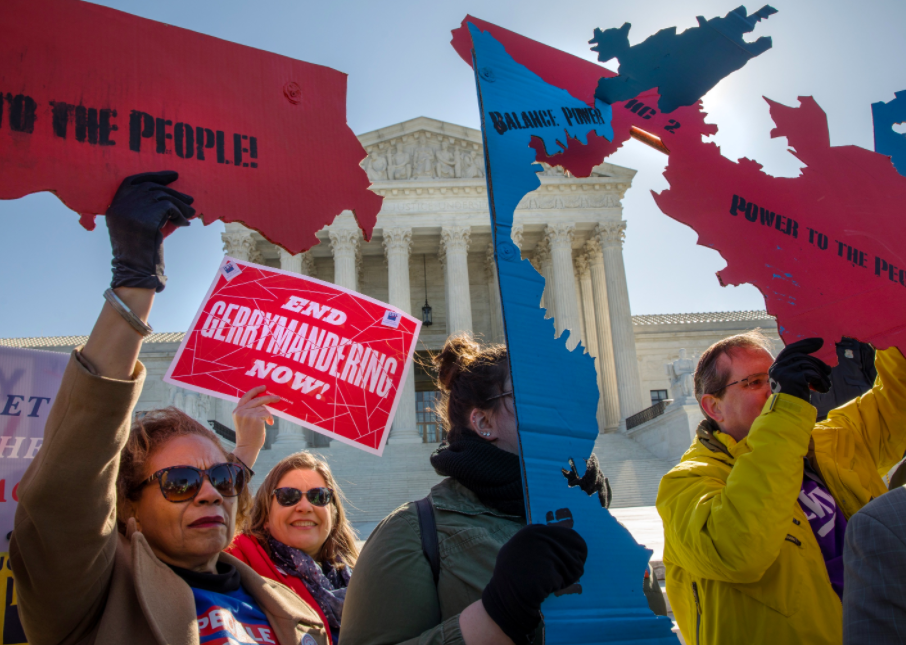
Evelyn Hockstein/For The Washington Post via Getty Images
Rucho v. Common Cause
– Topic: partisan gerrymandering as a judicial question
– Case decided on: June 27, 2019
– Vote tally: 5-4 decision for Rucho
– Justices who concurred: John Roberts, Clarence Thomas, Samuel Alito, Neil Gorsuch, Brett Kavanaugh
– Justices who dissented: Ruth Bader Ginsburg, Stephen Breyer, Sonia Sotomayor, Elena Kagan
– Chief justice at the time: John Roberts
– Majority and dissenting opinions
This case is a consolidation of several cases in which plaintiffs argued that their redistricting plans deliberately discriminated against a certain political party, an act called partisan gerrymandering. The Supreme Court did not pass a specific decision regarding the issue at hand and found that partisan gerrymandering claims are considered a political question, and are therefore out of the jurisdiction of the federal courts.
How this affects you: The court’s vacation of this case allows for partisan gerrymandering to still happen, in which some legislatures redraw districts so that they gain more votes favorable to their political party, rather than the actual constituency that makes up that district.
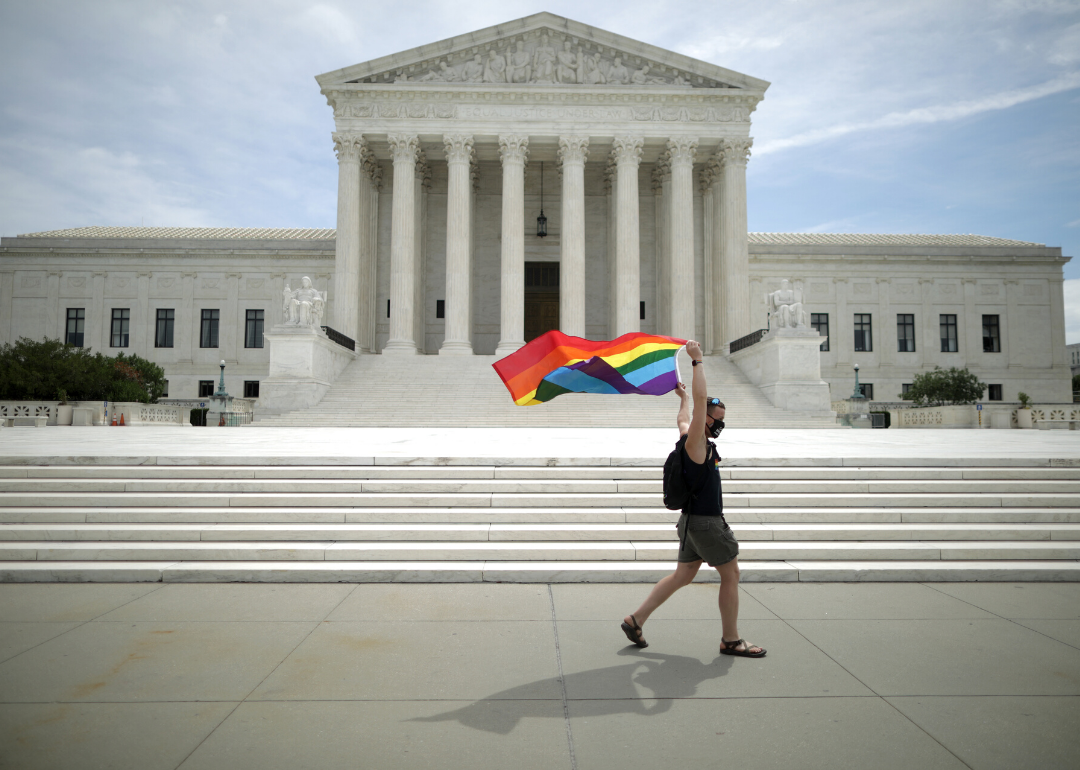
Chip Somodevilla // Getty Images
Bostock v. Clayton County
– Topic: firing someone on the basis of homosexuality
– Case decided on: June 15, 2020
– Vote tally: 6-3 decision for Bostock
– Justices who concurred: John Roberts, Ruth Bader Ginsburg, Stephen Breyer, Sonia Sotomayor, Elena Kagan, Neil Gorsuch
– Justices who dissented: Clarence Thomas, Samuel Alito, Brett Kavanaugh
– Chief justice at the time: John Roberts
– Majority and dissenting opinions
Bostock is a consolidation of several cases in which an employee was fired for being homosexual. In a historic ruling, the court decided in favor of the employees. Title VII of the Civil Rights Act prohibits employers from discriminating against their workers “because of such individual’s race, color, religion, sex, or national origin.” Homosexuality is seen as an extension of discriminating against someone based on their sex.
How this affects you: This case helps expand LGBTQ+ rights in America, as employers cannot discriminate based on the sexual preferences or orientation of their employees.
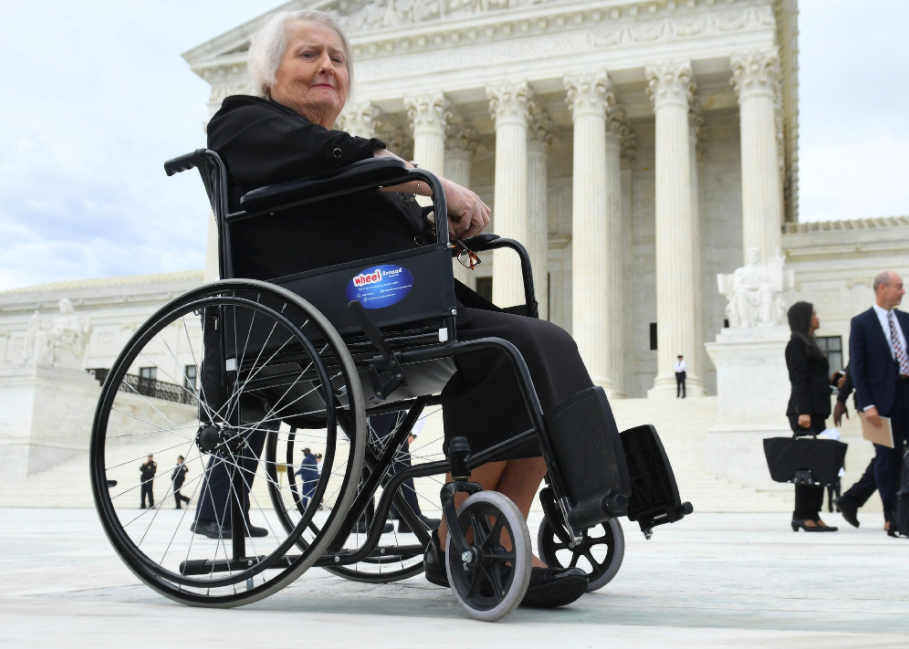
SAUL LOEB / AFP) (Photo by SAUL LOEB/AFP via Getty Images
R.G. & G.R. Harris Funeral Homes Inc. v. Equal Employment Opportunity Commission
– Topic: firing someone on the basis of being transgender
– Case decided on: June 15, 2020
– Vote tally: 6-3 decision for EEOC
– Justices who concurred: John Roberts, Ruth Bader Ginsburg, Stephen Breyer, Sonia Sotomayor, Elena Kagan, Neil Gorsuch
– Justices who dissented: Clarence Thomas, Samuel Alito, Brett Kavanaugh
– Chief justice at the time: John Roberts
– Majority and dissenting opinions
In a 6-3 decision, the court concluded that firing someone for being transgender also violates Title VII of the Civil Rights Act of 1964. Firing someone based on their sex is a violation of Title VII, and transgender status is seen as an extent of that by the majority.
How this affects you: Just like Bostock, this ruling is a win for LGBTQ+ rights in America, as employers cannot discriminate based on the identity of their employees.
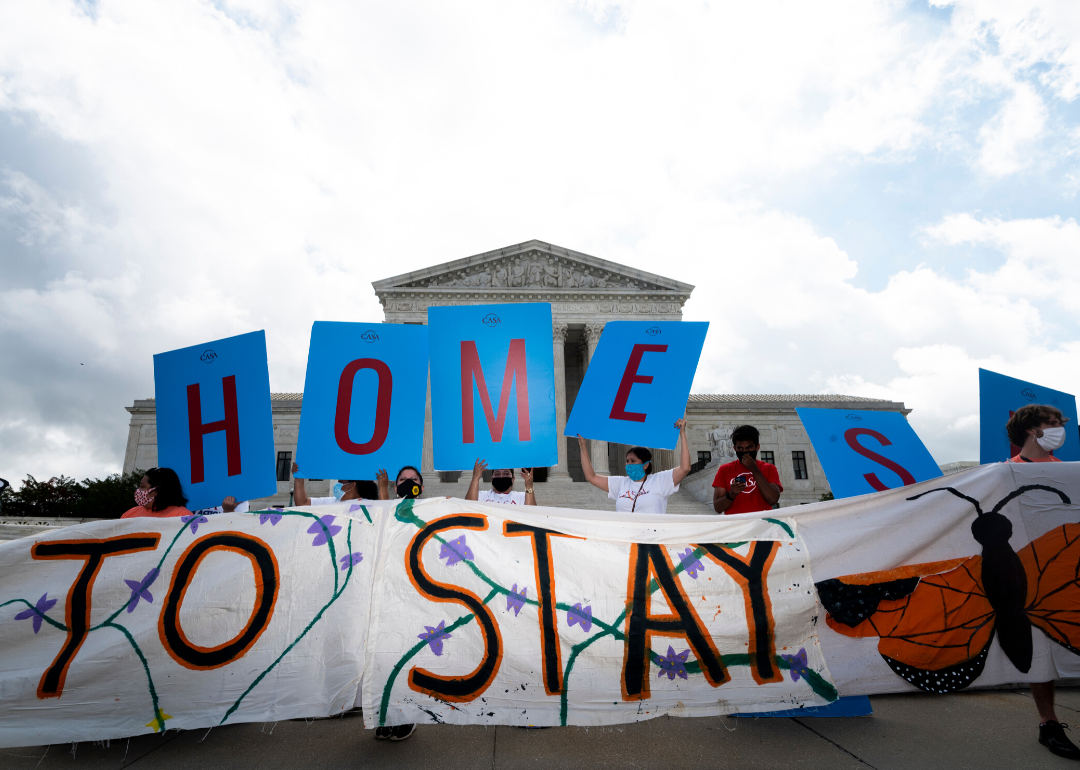
Bill Clark/CQ-Roll Call, Inc via Getty Images
Department of Homeland Security v. Regents of the University of California
– Topic: DHS phasing out DACA
– Case decided on: June 18, 2020
– Vote tally: Multiple decisions
– Justices who concurred: John Roberts, Clarence Thomas, Ruth Bader Ginsburg, Stephen Breyer, Samuel Alito, Sonia Sotomayor, Elena Kagan, Neil Gorsuch, Brett Kavanaugh
– Chief justice at the time: John Roberts
– Majority and dissenting opinions
After the election of President Donald Trump, the Department of Homeland Security started to phase out the Obama-era Deferred Action for Childhood Arrivals program, which allowed more than 700,000 undocumented immigrants who came to the United States as children to live and work without fear of deportation. The administration argued that the DACA program was illegal based on a prior U.S. Court of Appeals Fifth Circuit decision. However, in a 5-4 ruling, the court decided that the Trump administration violated the proper procedure for phasing out this program, as the Fifth Circuit did not definitively allow a DACA recipient to be deported out of the country if the program is eliminated, and that is one of the key factors to consider before repealing the program.
How this affects you: While this ruling is important for the lives of all DACA recipients, it does not fully confirm that the DACA program is safe from being eliminated. However, it shows that the administration cannot easily phase out the program unless all factors of the program have been repealed or walked back.
You may also like: Most and least popular governors in America
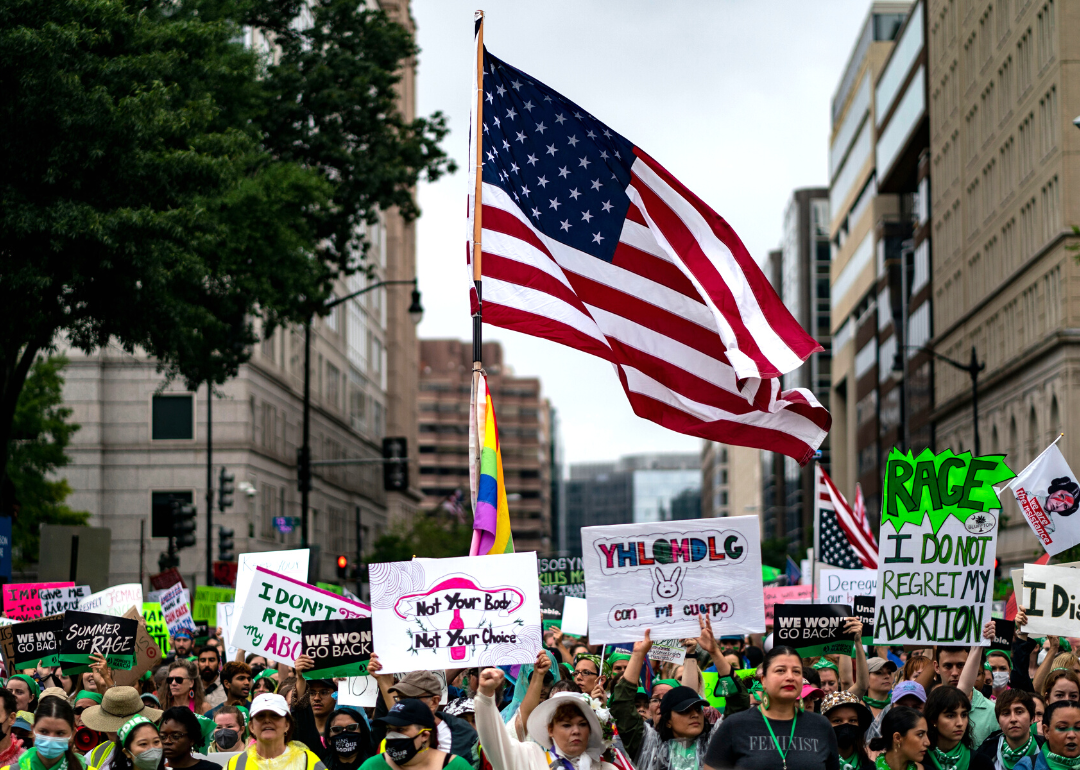
Kent Nishimura / Los Angeles Times via Getty Images
Dobbs v. Jackson Women’s Health Organization
– Topic: privacy rights
– Case decided on: June 4, 2022
– Vote tally: 6-3 decision for Dobbs
– Justices who concurred: Samuel Alito, Amy Coney Barrett, Neil Gorsuch, Brett Kavanaugh, John Roberts, Clarence Thomas
– Justices who dissented: Stephen Breyer, Elena Kagan, Sonia Sotomayor
– Chief justice at the time: John Roberts
– Majority and dissenting opinions
In an unprecedented move, the Supreme Court overturned the 1973 decision made in Roe v. Wade, which had previously protected a person’s right to an abortion under the argument of a right to privacy. A draft of Justice Samuel Alito’s majority opinion to overturn Roe was leaked to the public on May 2, 2022, about a month in advance of the court’s official decision. The drastic change caused many to criticize the judgment and impartiality of the Supreme Court, especially that of Justices Barrett, Gorsuch, and Kavanaugh, who were all appointed by Donald Trump during his presidency.
How this affects you: The right to an abortion and the right to privacy on which the Roe v. Wade decision was based is no longer guaranteed nationwide. Many states either had existing trigger laws to restrict or ban abortions as soon as Dobbs v. Jackson Women’s Health Organization was decided and many more have passed new legislation to the same effect. This decision also sets the stage for the Supreme Court to potentially overturn other court precedents previously considered binding.

SAUL LOEB/AFP via Getty Images
New York State Rifle & Pistol Association Inc. v. Bruen
– Topic: gun regulation
– Case decided on: June 23, 2022
– Vote tally: 6-3 decision for New York State Rifle & Pistol Association Inc.
– Justices who concurred: Samuel Alito, Amy Coney Barrett, Neil Gorsuch, Brett Kavanaugh, John Roberts, Clarence Thomas
– Justices who dissented: Stephen Breyer, Elena Kagan, Sonia Sotomayor
– Chief justice at the time: John Roberts
– Majority and dissenting opinions
Though there was a dip in mass shootings in the U.S. during the beginning of the COVID-19 pandemic, the return to in-person activities coincided with more than 600 mass shootings in 2022. This rapid growth in violence prompted the state of New York to pass a law requiring those who want to carry a concealed firearm in public to have a license. The decision in NYSRPA v. Bruen declared that law unconstitutional on the grounds that it violated the right to bear arms in the Second Amendment.
How this affects you: The law seen in New York was not the only one of its kind. Similar laws in eight other states were also impacted, allowing individual gun owners to carry a concealed weapon in public without an additional license beyond what is already required to own a gun in that state.

Win McNamee/Getty Images
Kennedy v. Bremerton School District
– Topic: protected speech
– Case decided on: June 27, 2022
– Vote tally: 6-3 decision for Kennedy
– Justices who concurred: Samuel Alito, Amy Coney Barrett, Neil Gorsuch, Brett Kavanaugh, John Roberts, Clarence Thomas
– Justices who dissented: Stephen Breyer, Elena Kagan, Sonia Sotomayor
– Chief justice at the time: John Roberts
– Majority and dissenting opinions
Bremerton School District announced that high school football coach Joseph Kennedy would not have his contract renewed after he conducted a post-game team prayer on the 50-yard line. Kennedy sued for his job, stating that the district was infringing on his First Amendment rights to free speech and the free practice of religion. The Supreme Court ruled in favor of Kennedy, partly because of debates over the Lemon test, which is supposed to help determine whether a law or organization violated the First Amendment right to religion.
How this affects you: Granting Kennedy permission to conduct prayer on the field as a coach at a public high school calls into question what other religiously affiliated activities are acceptable for coaches, teachers, and other public school staff to host with their students. The separation of religious activities from civic or governmental organizations, such as public schools, may not be as clear moving forward.
